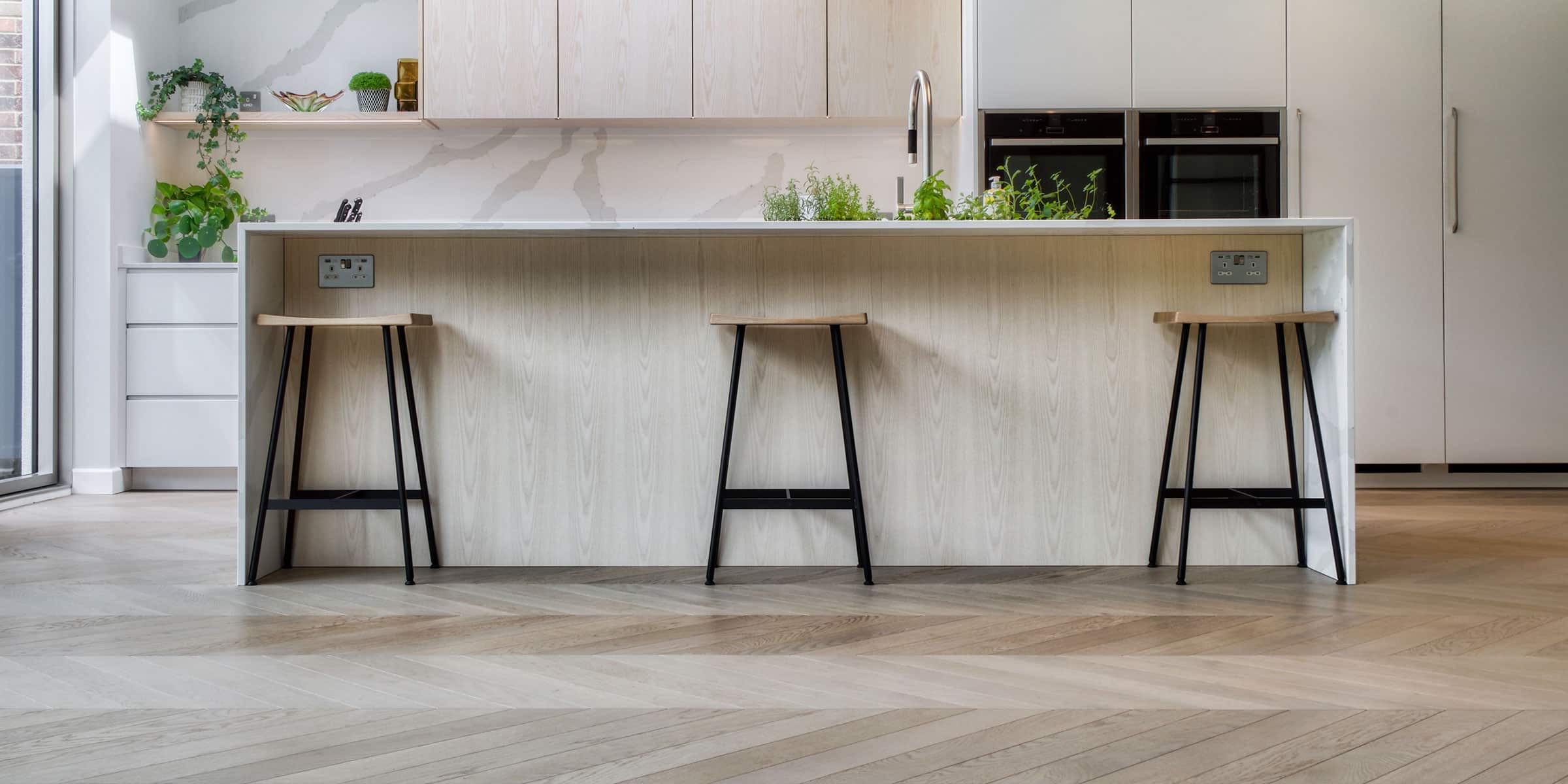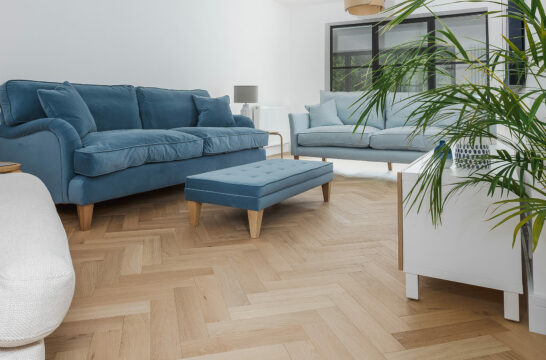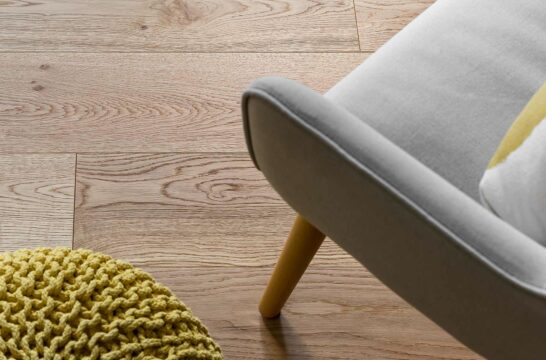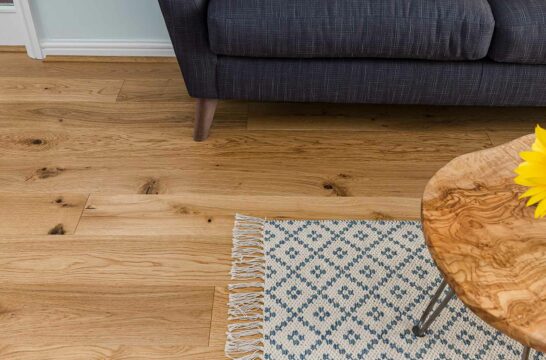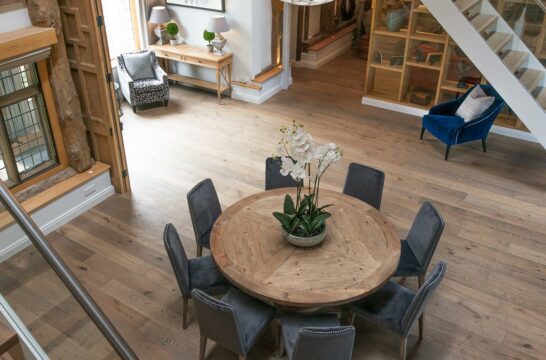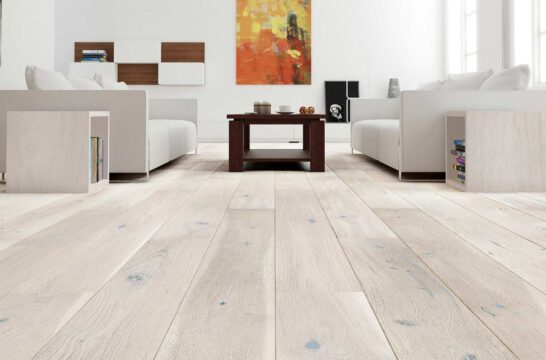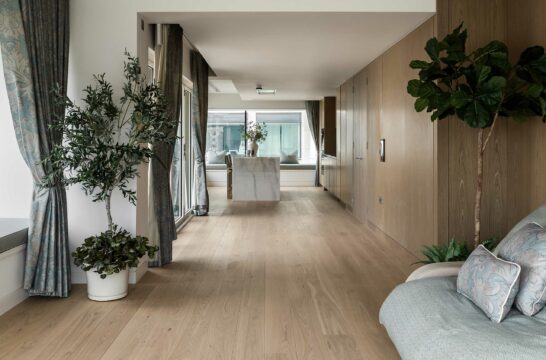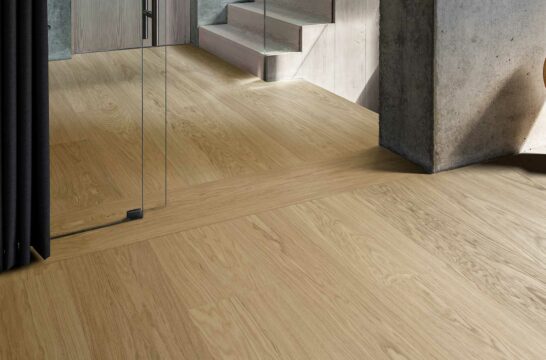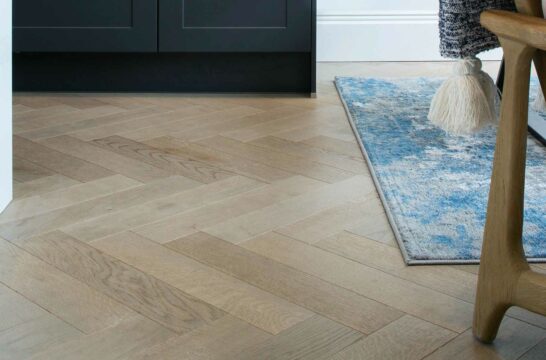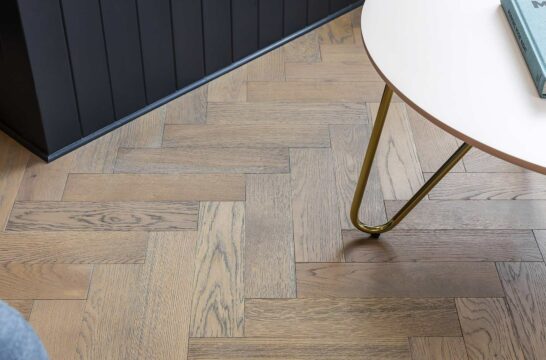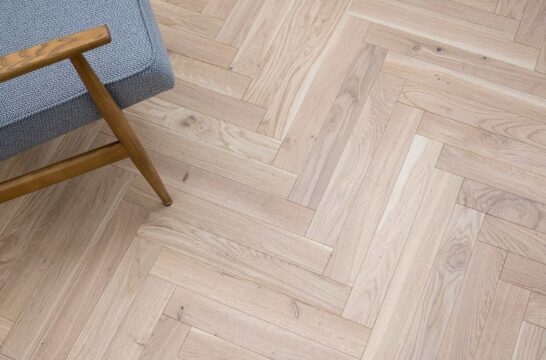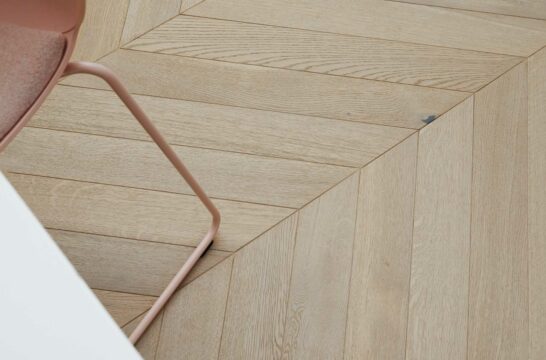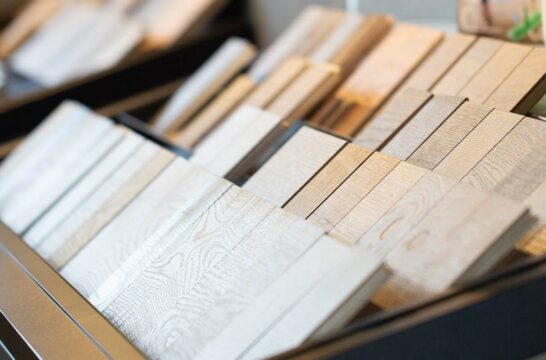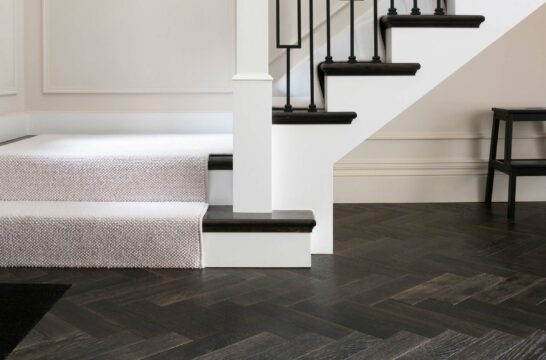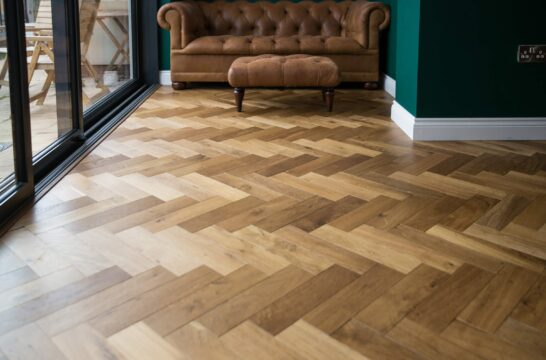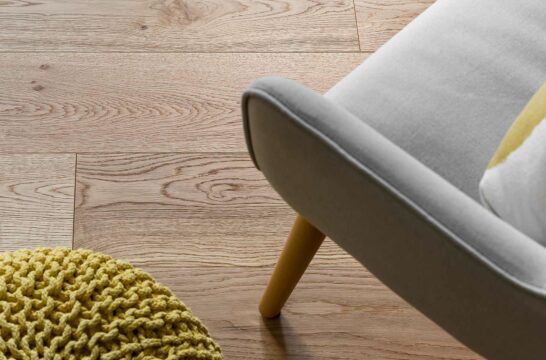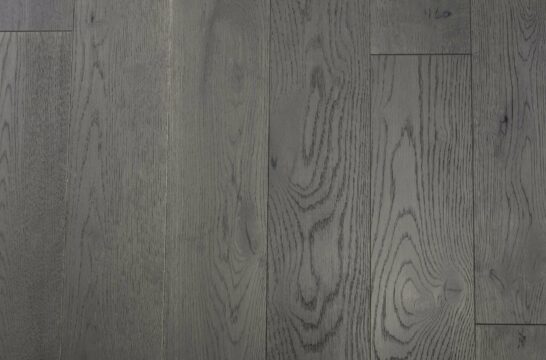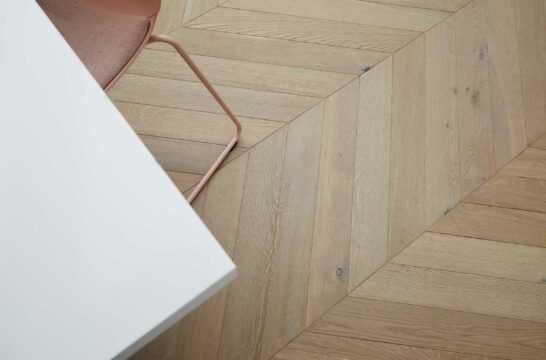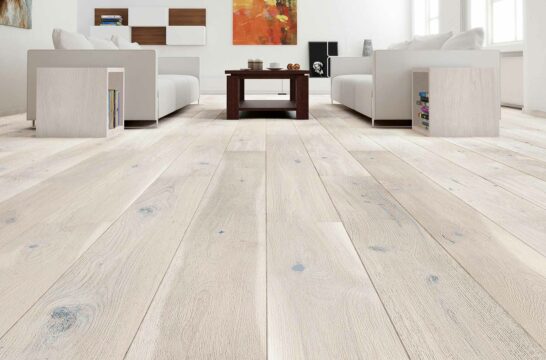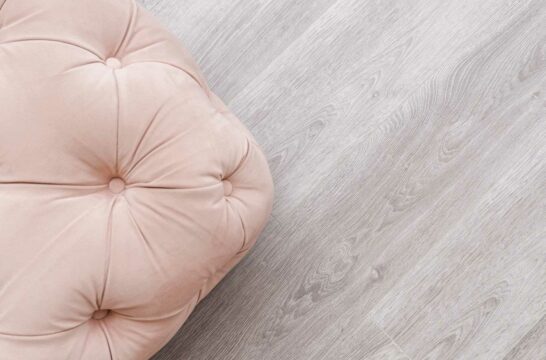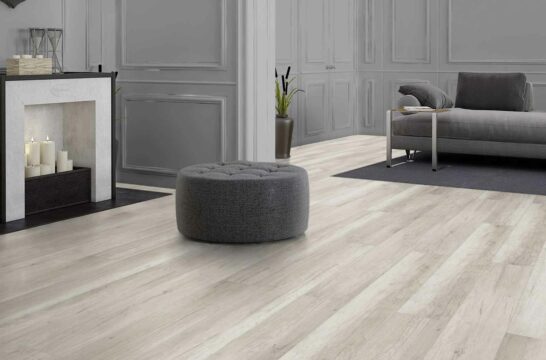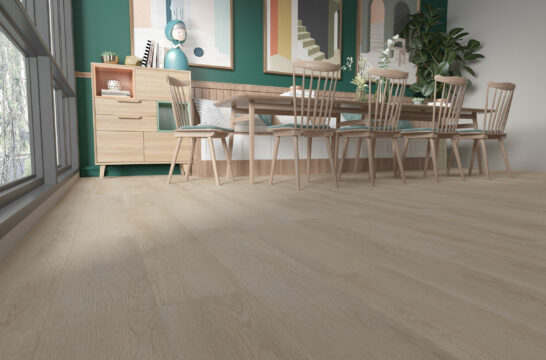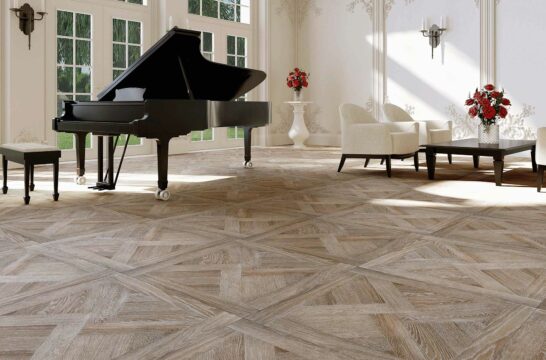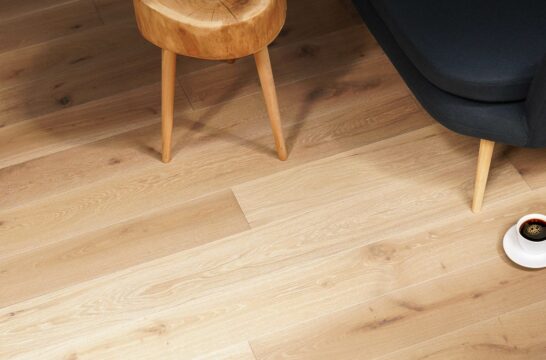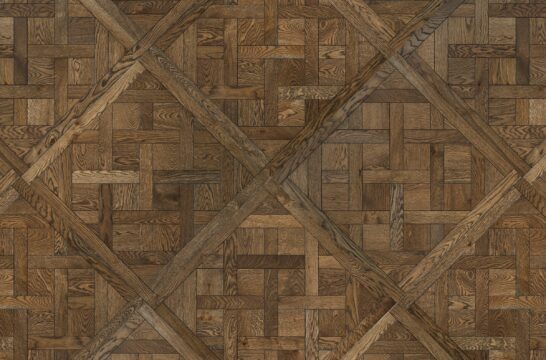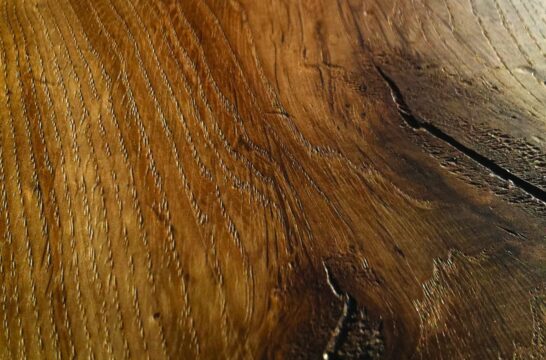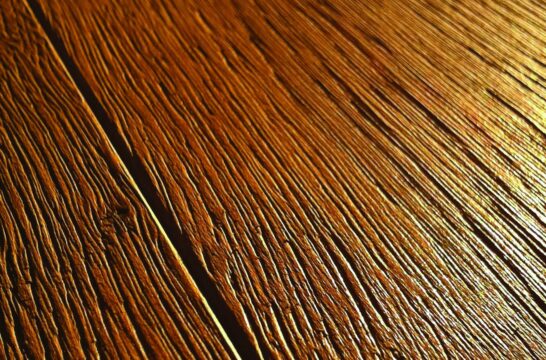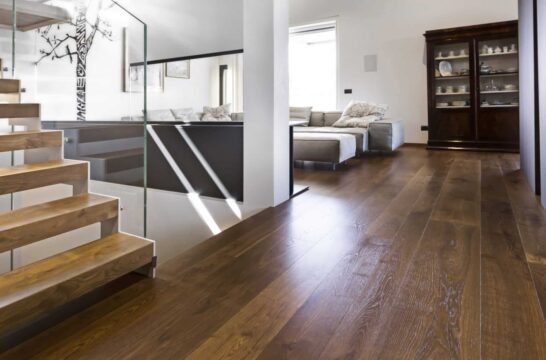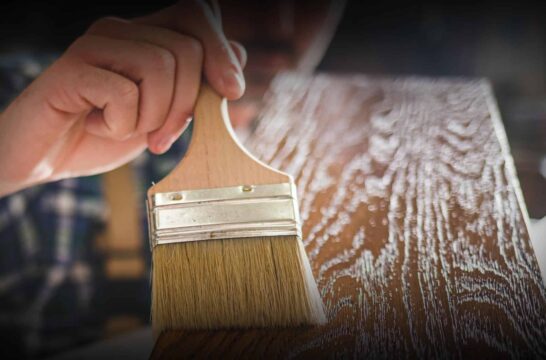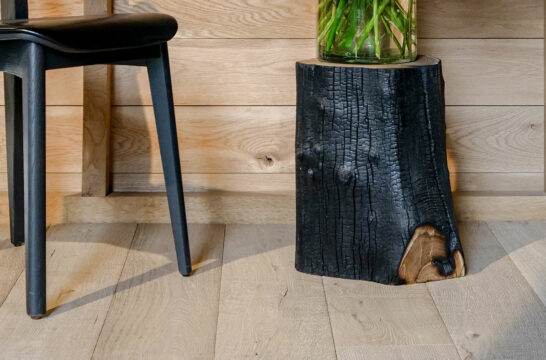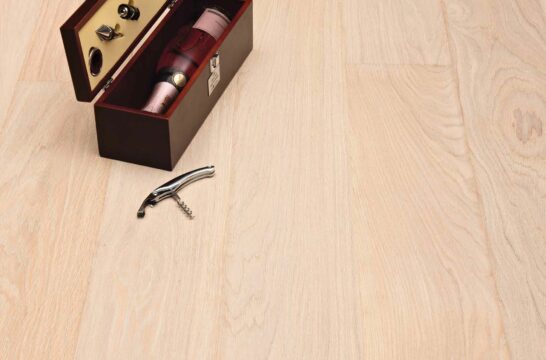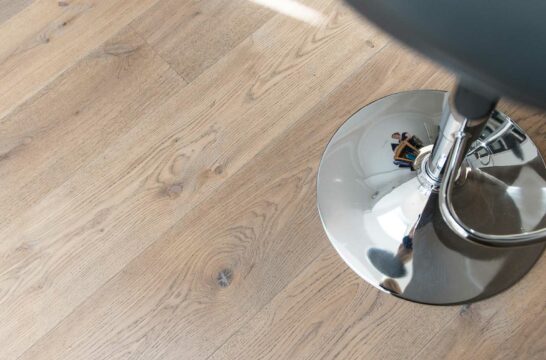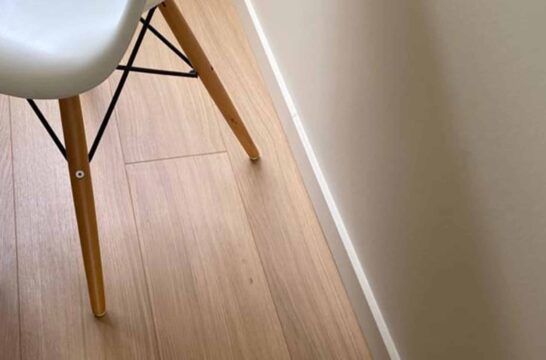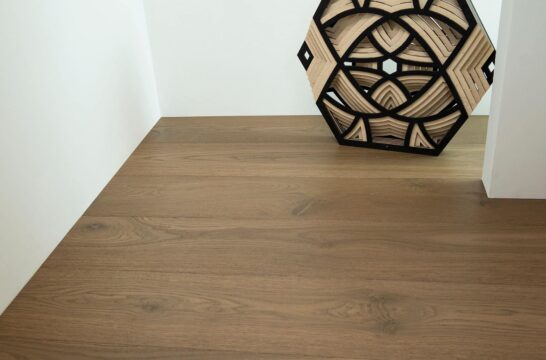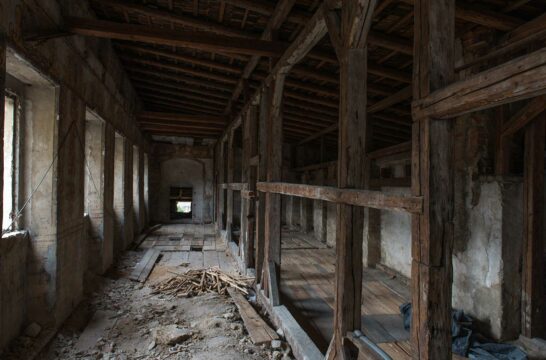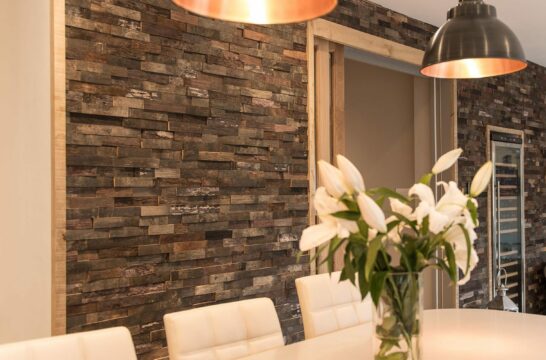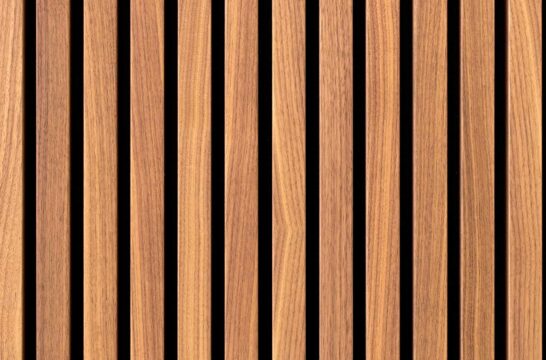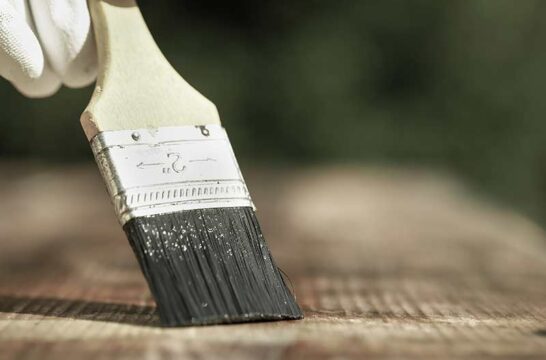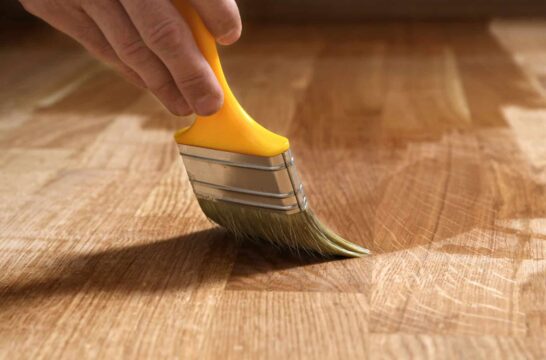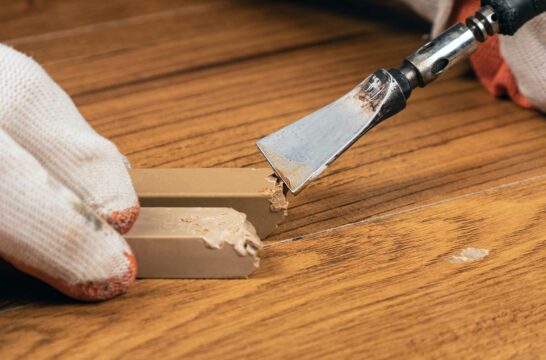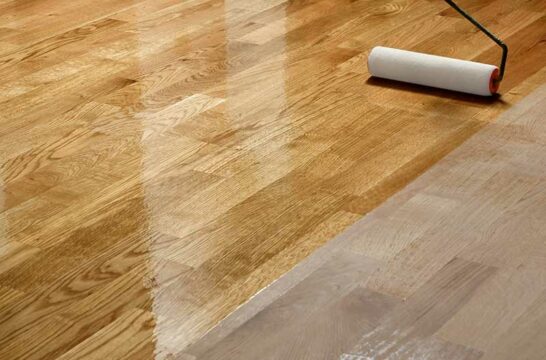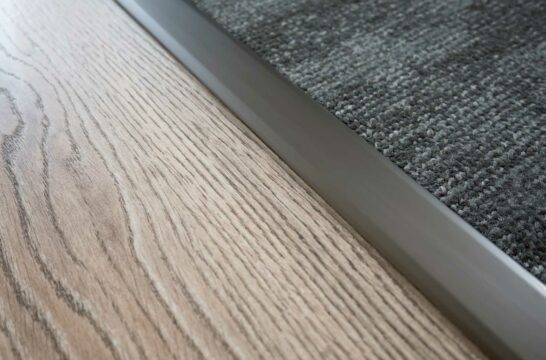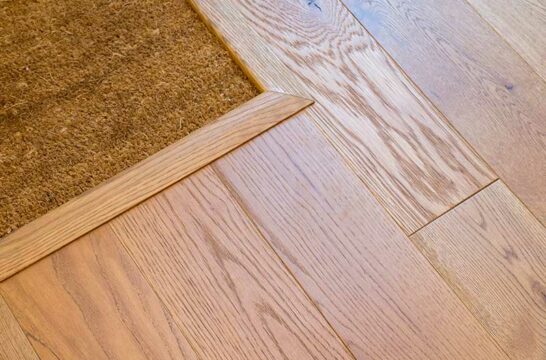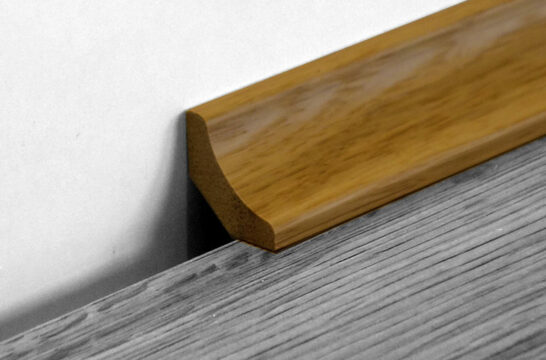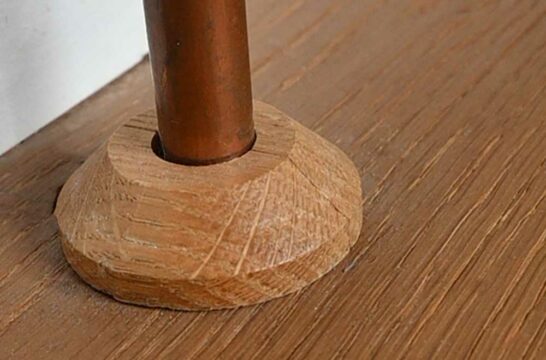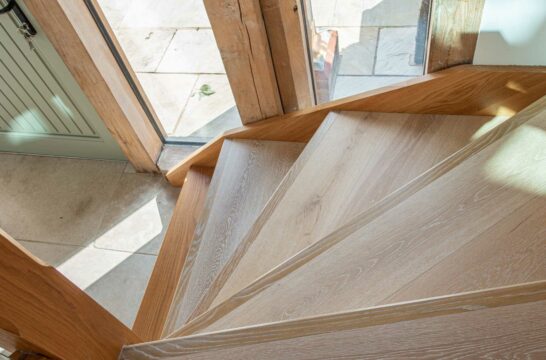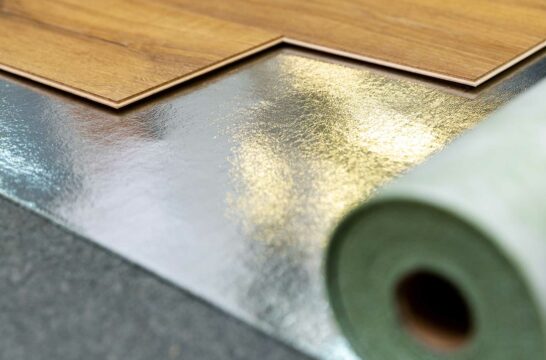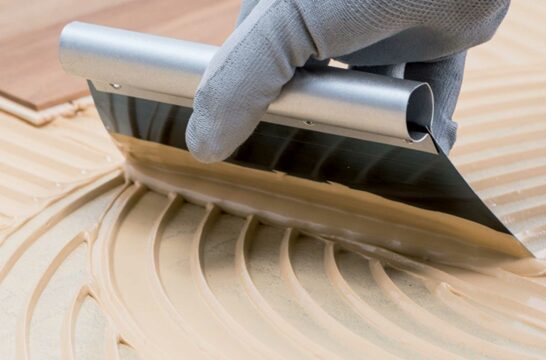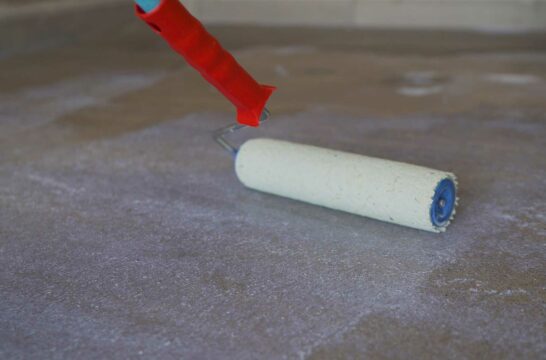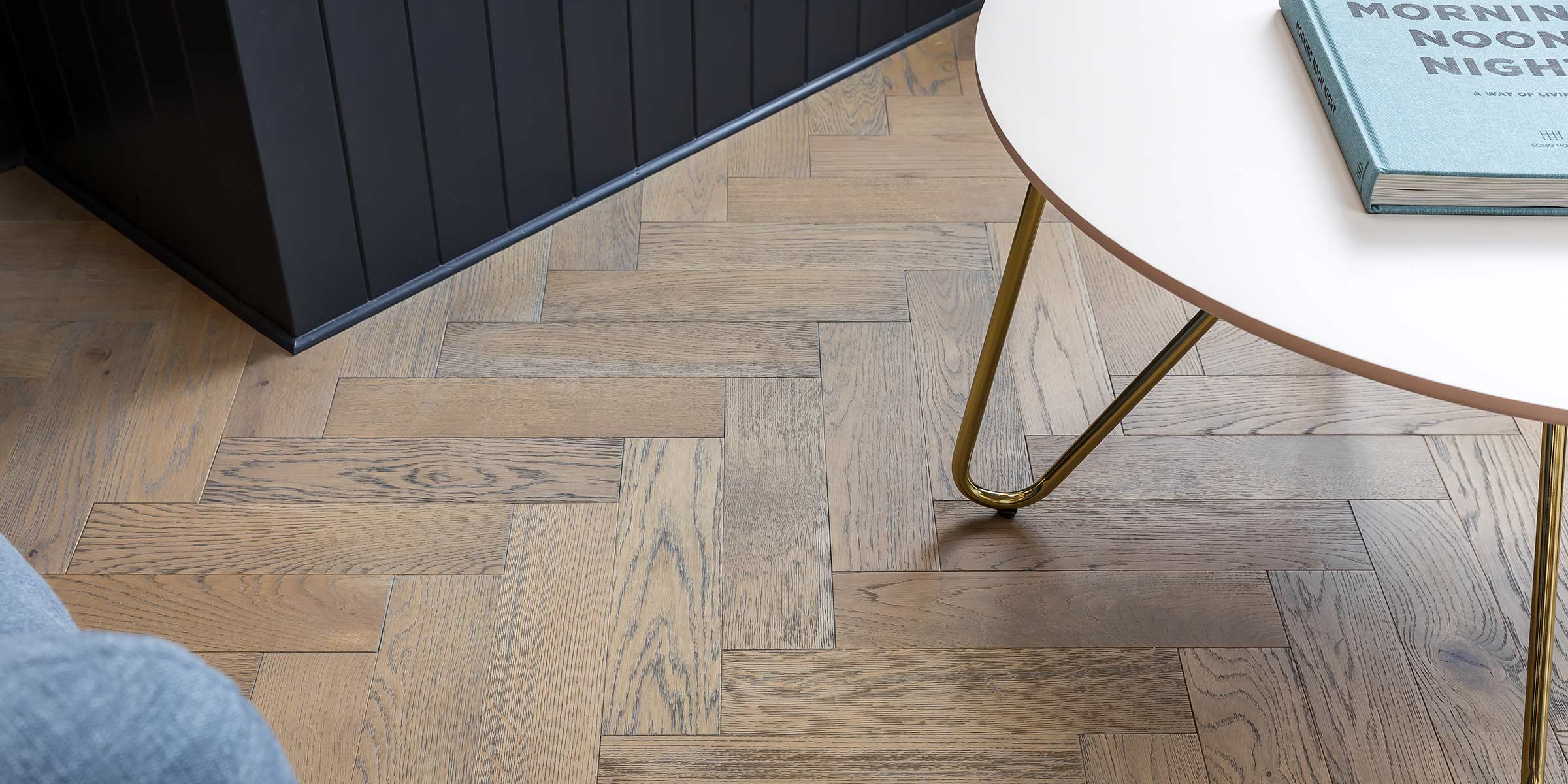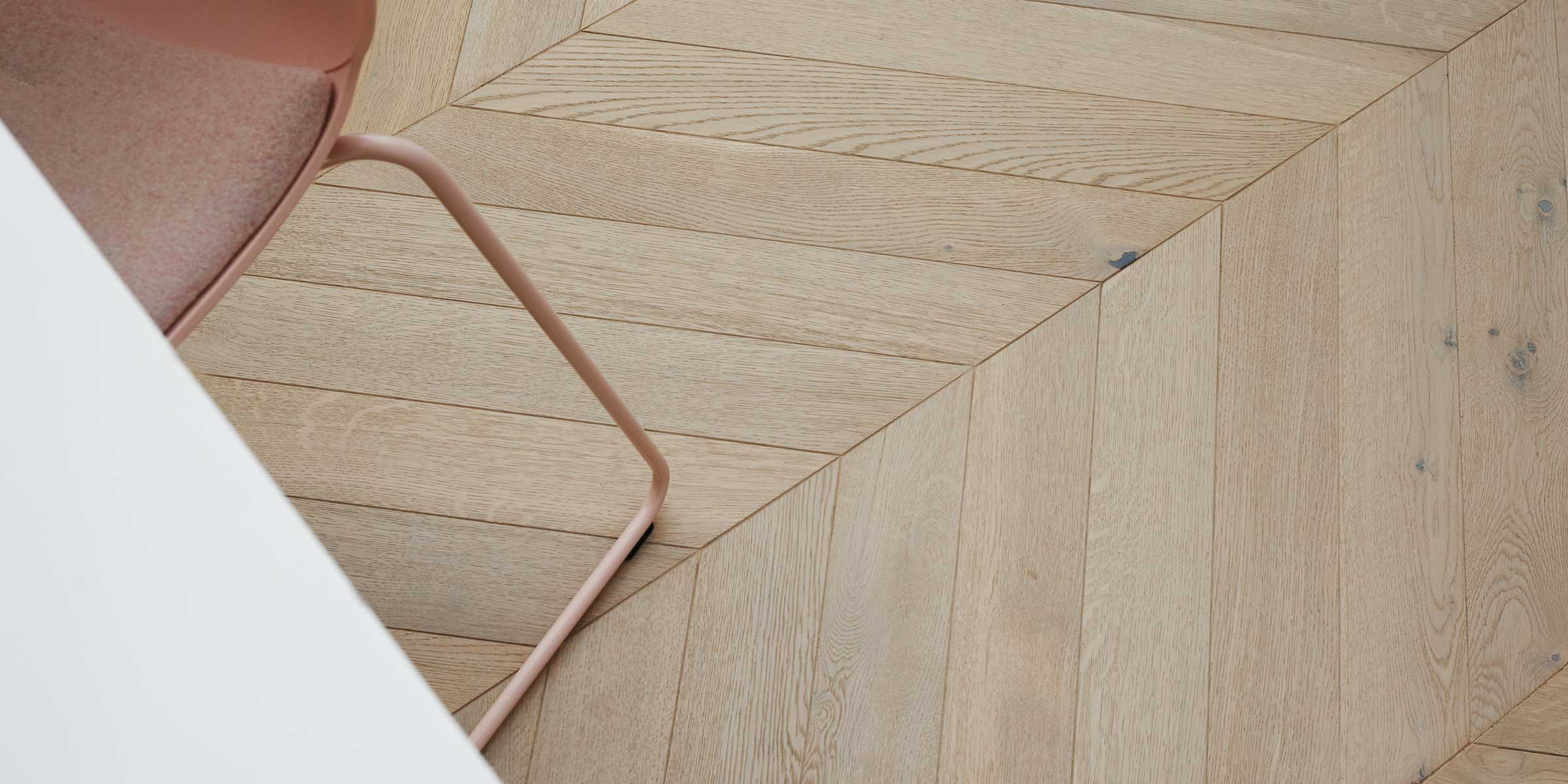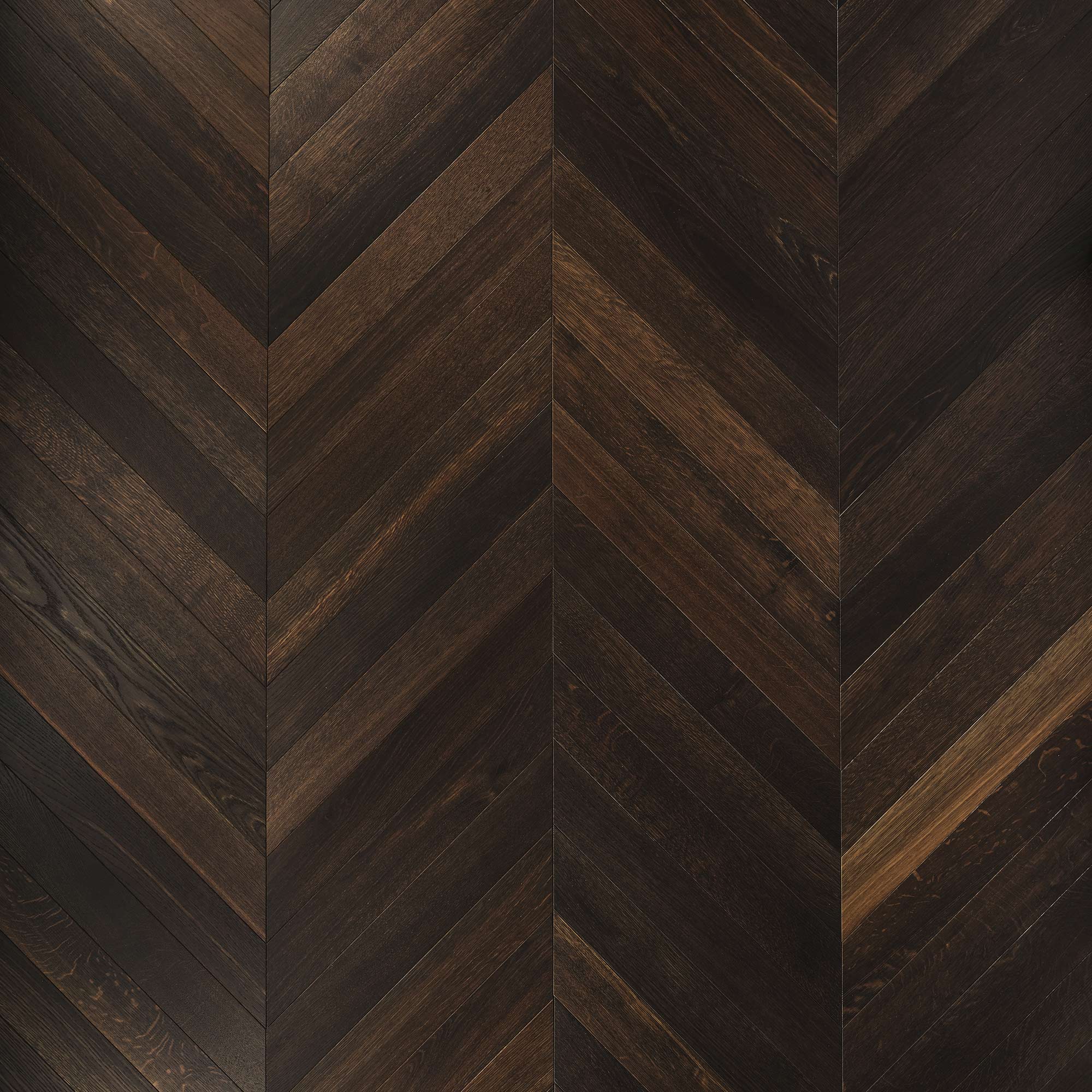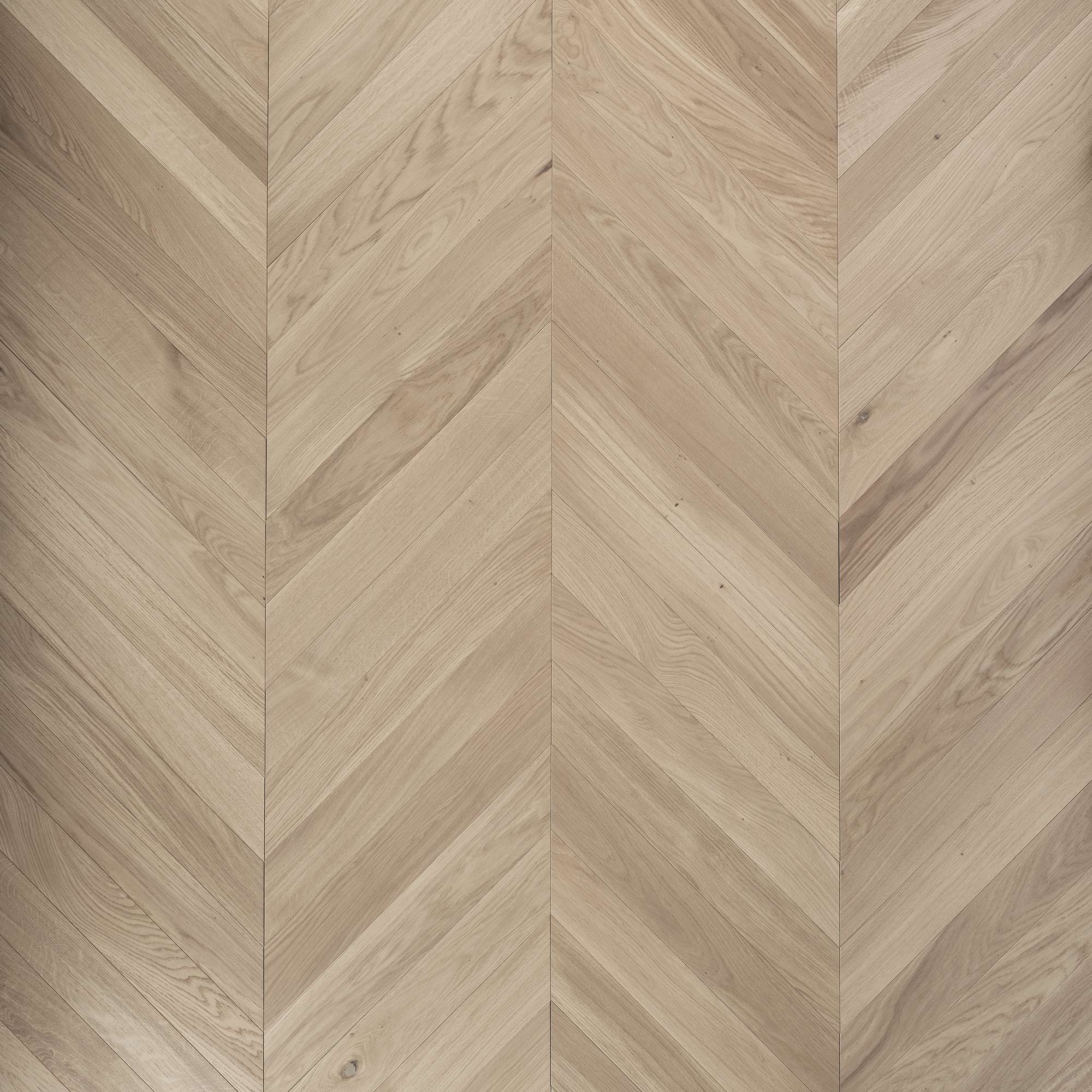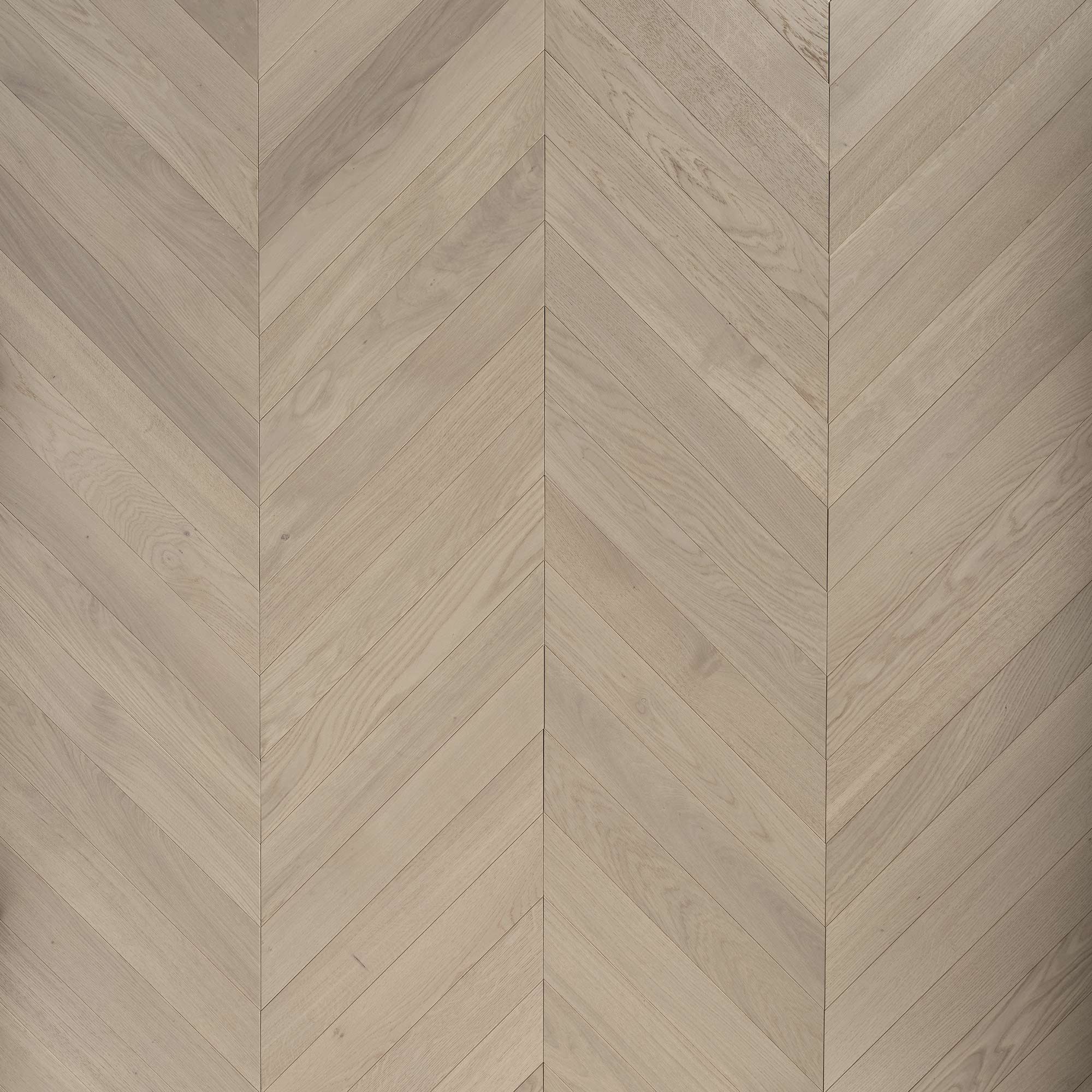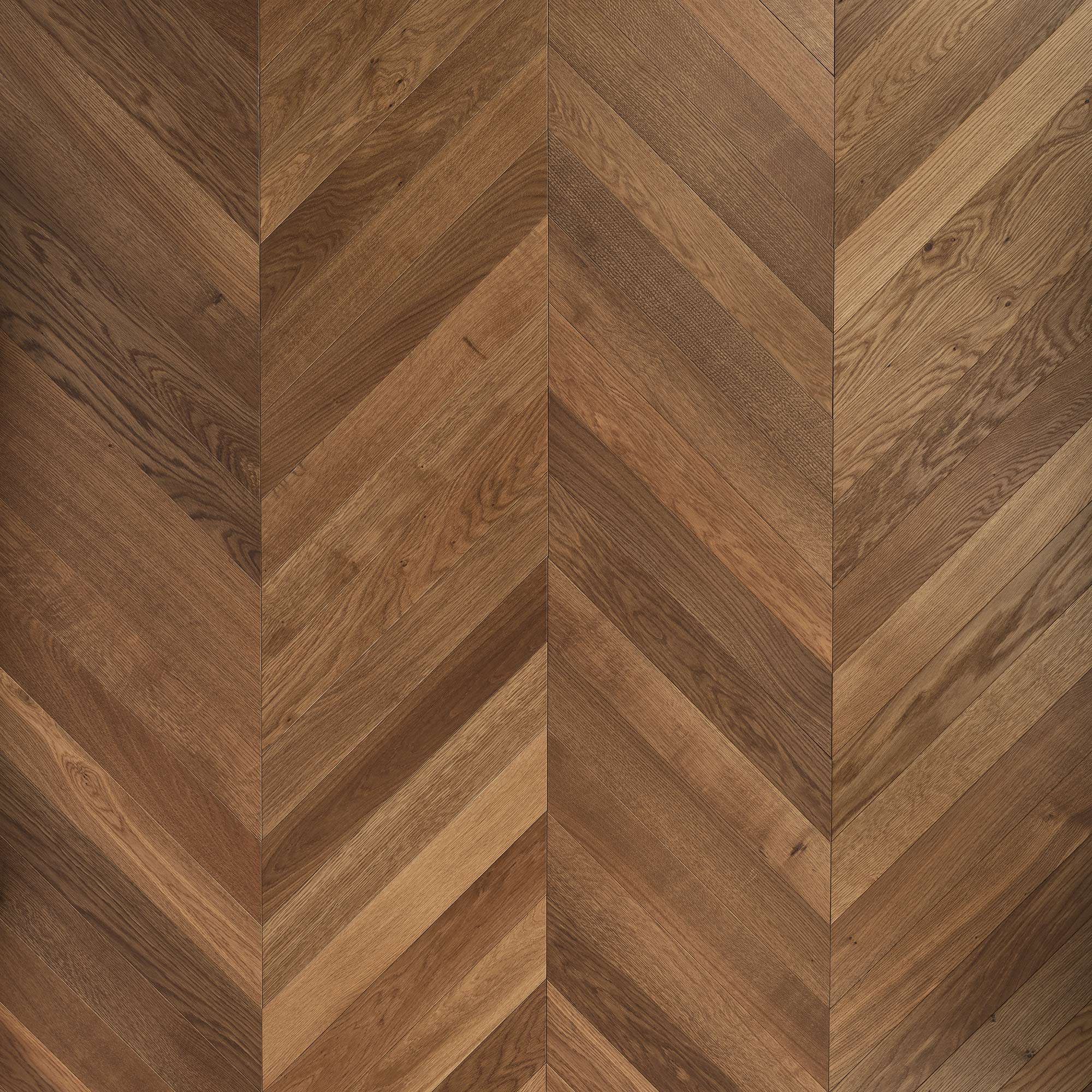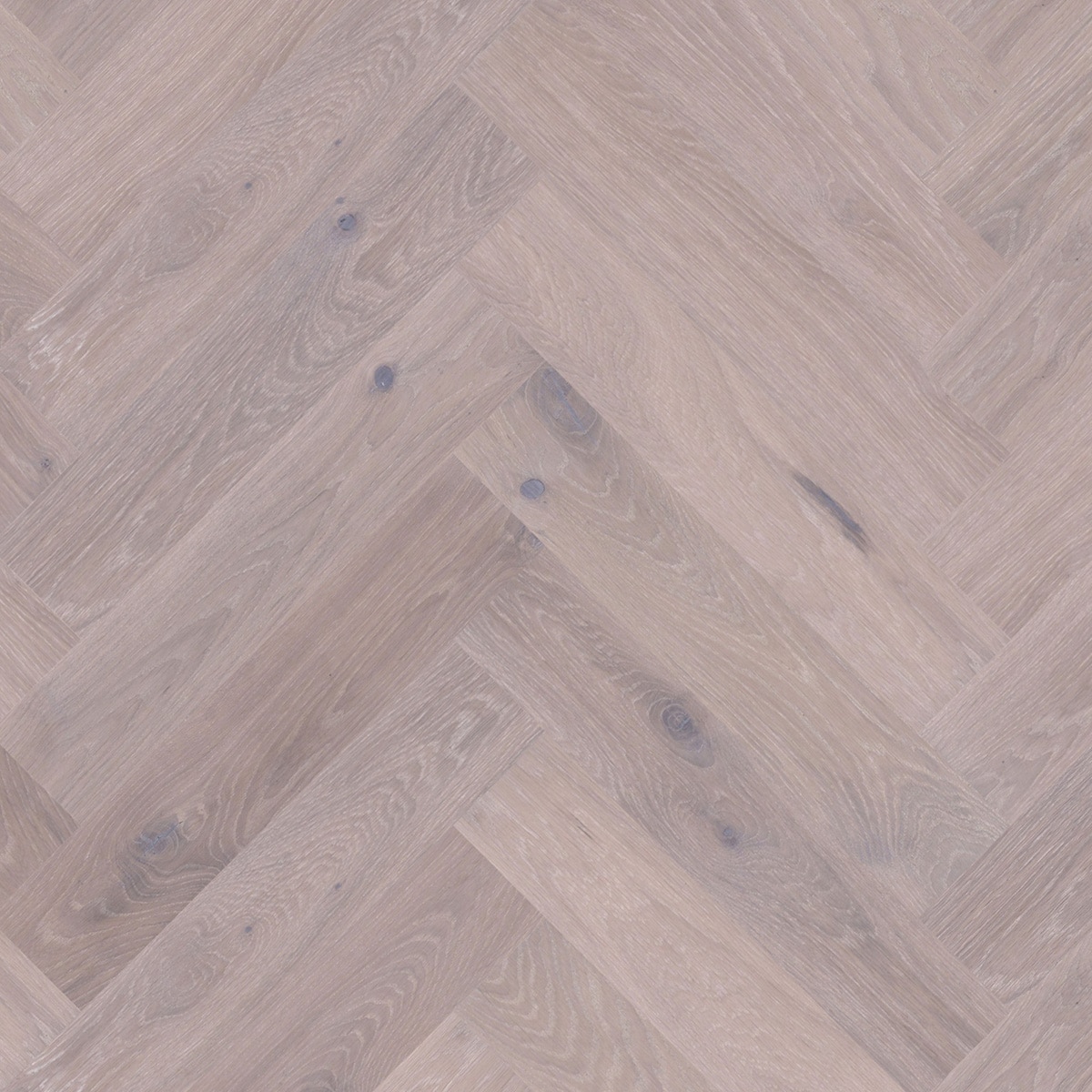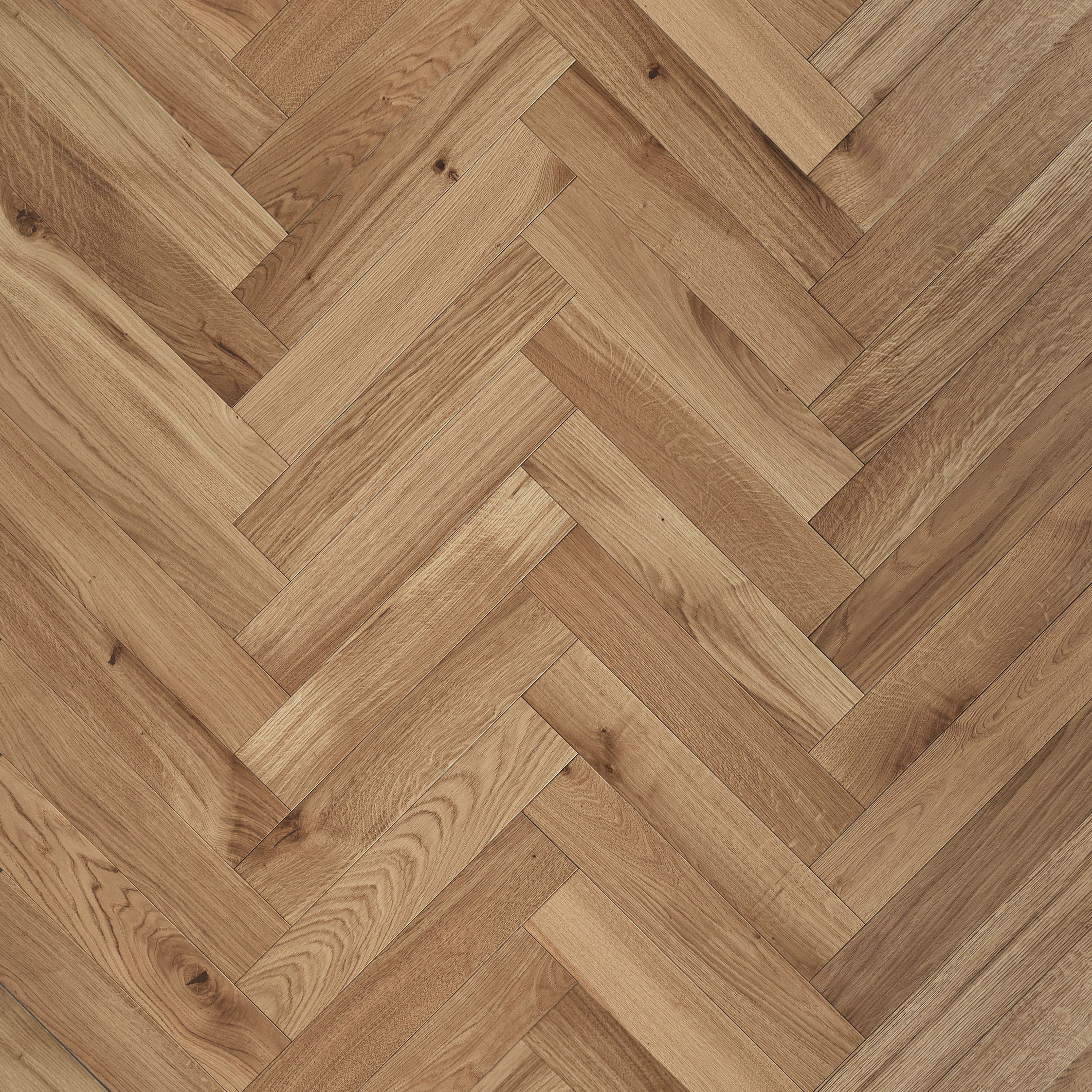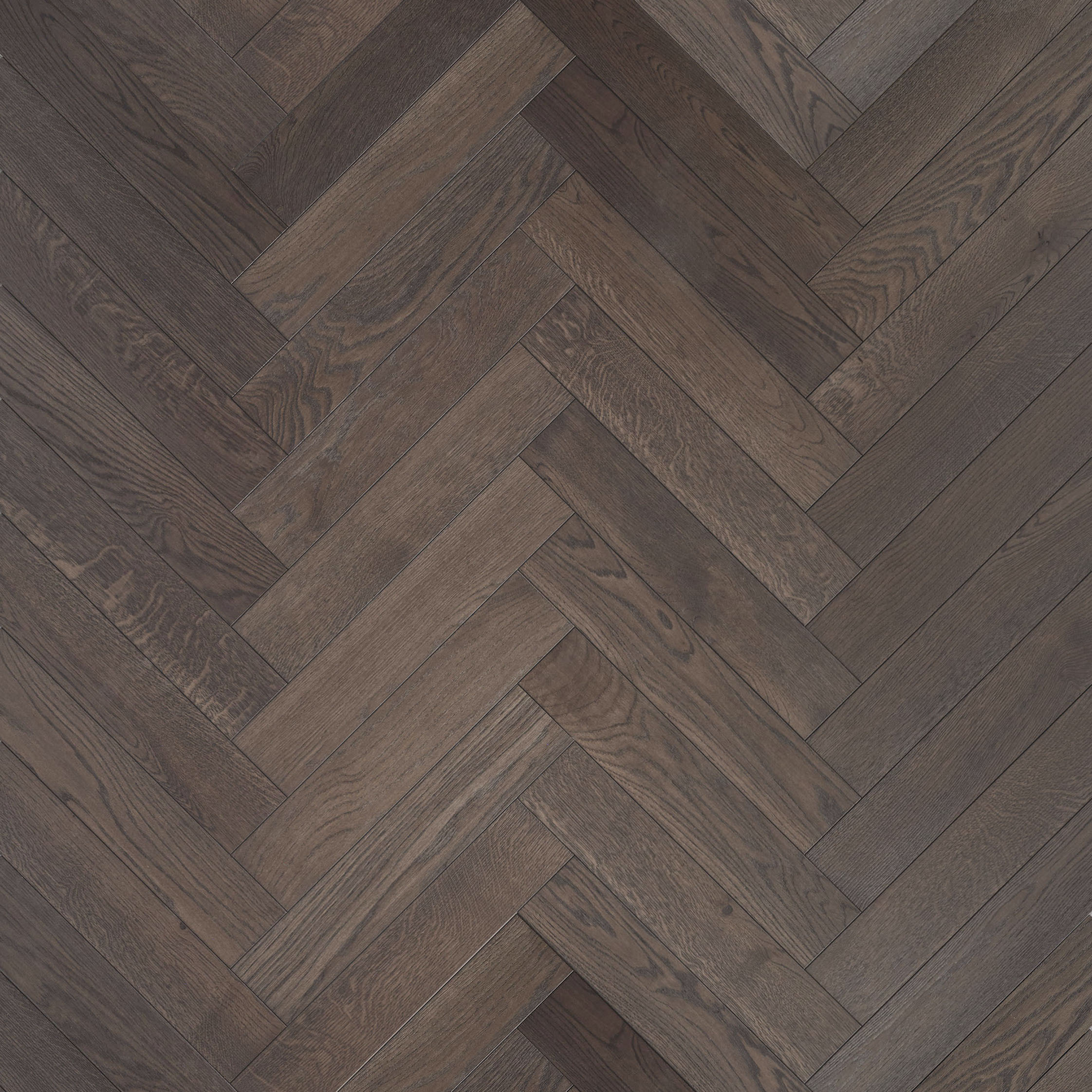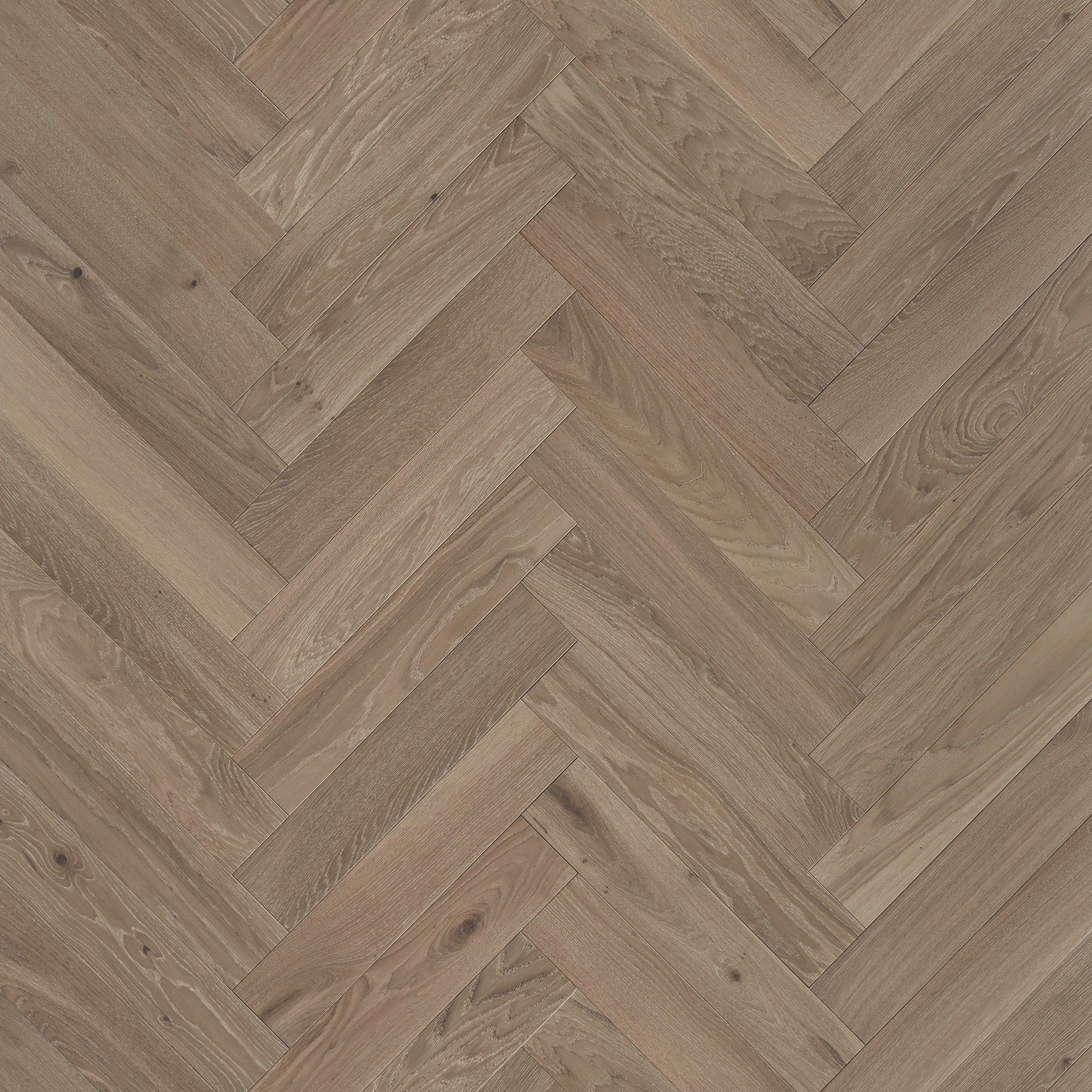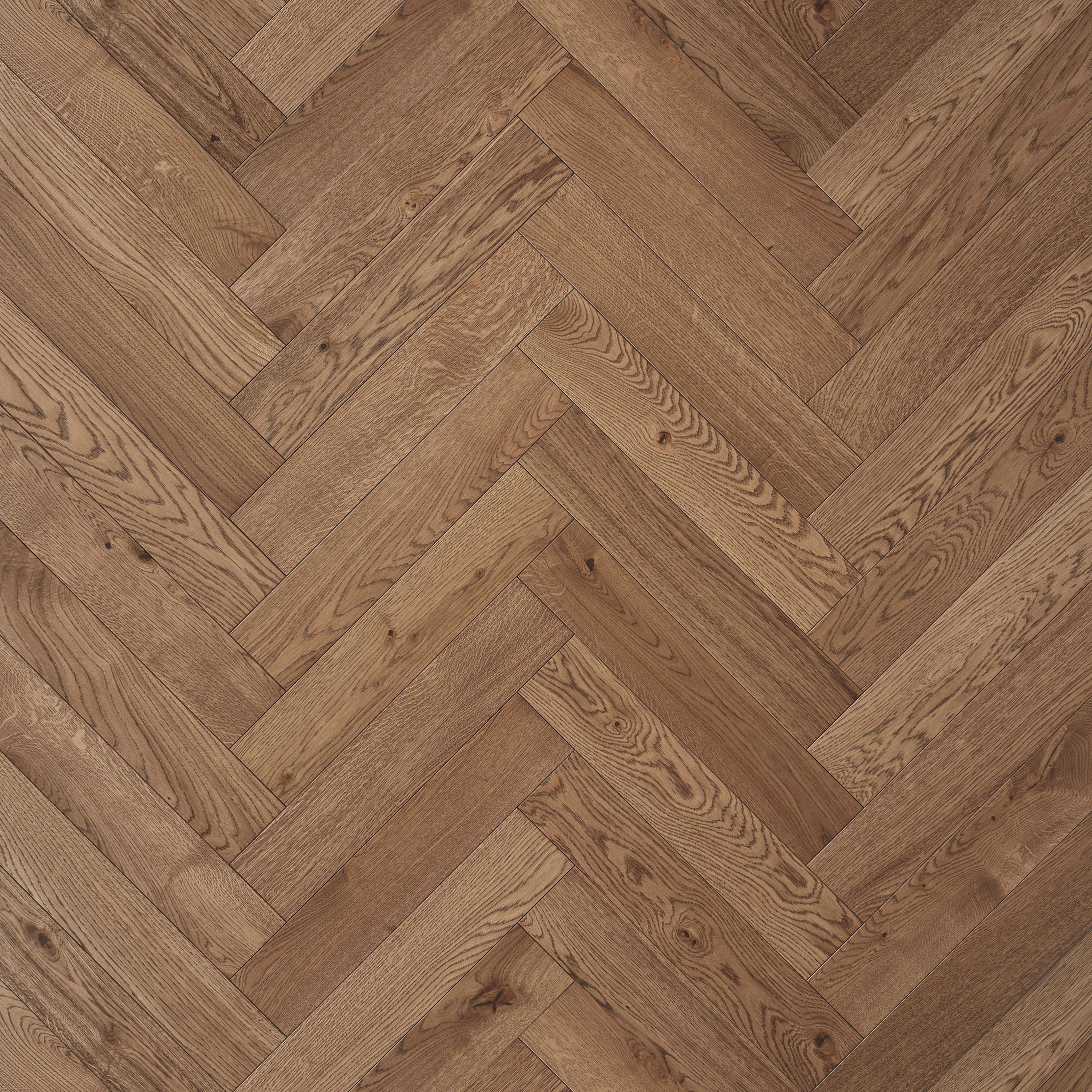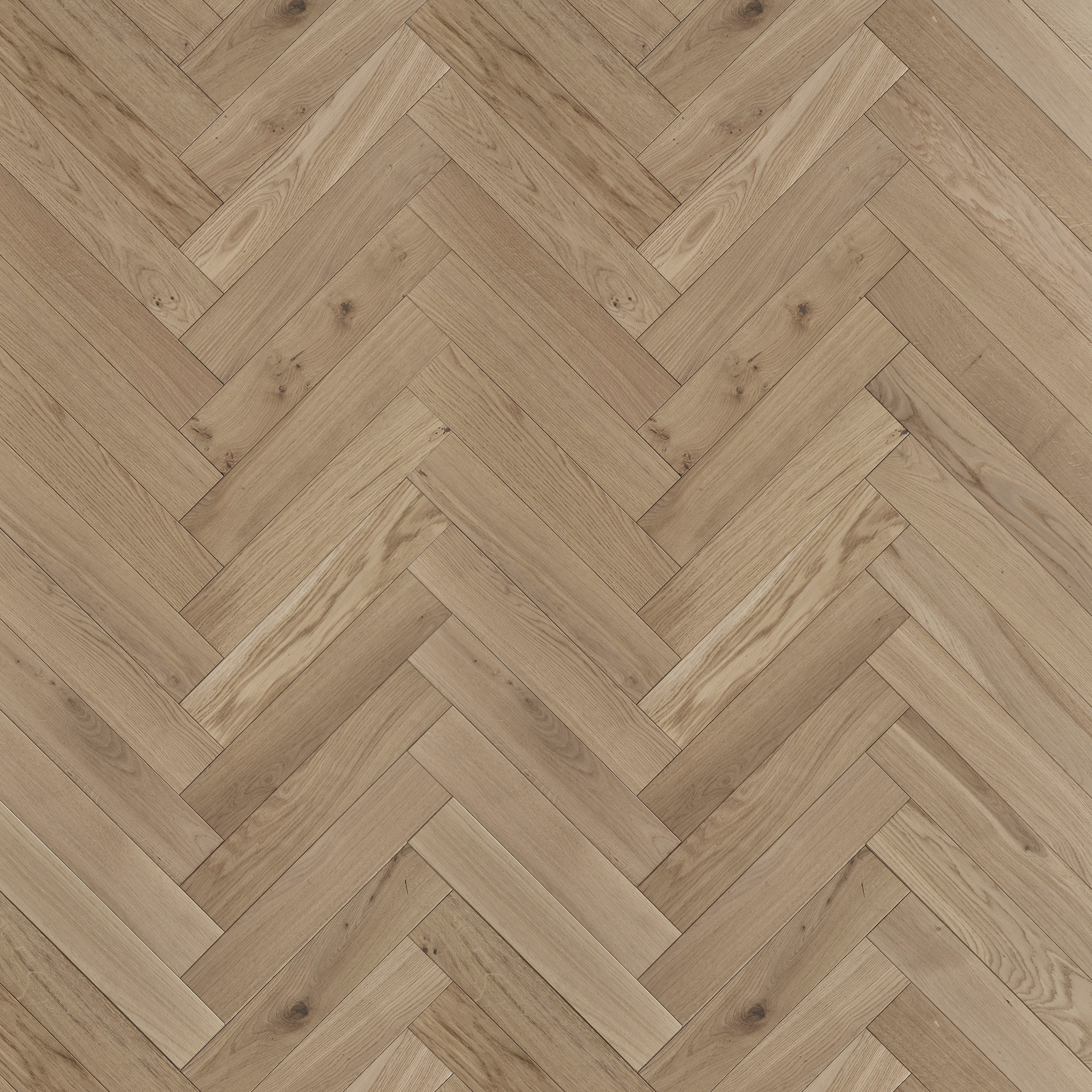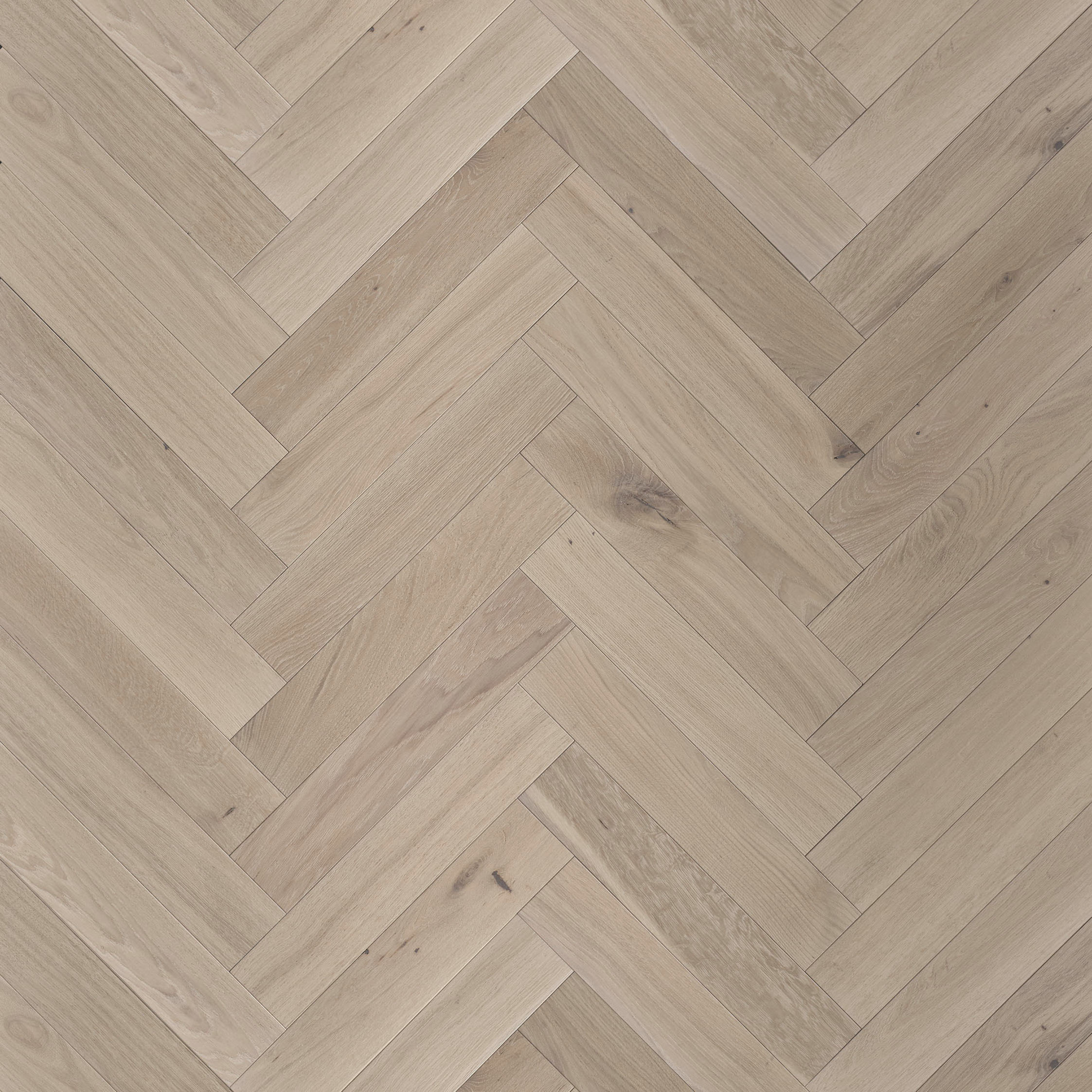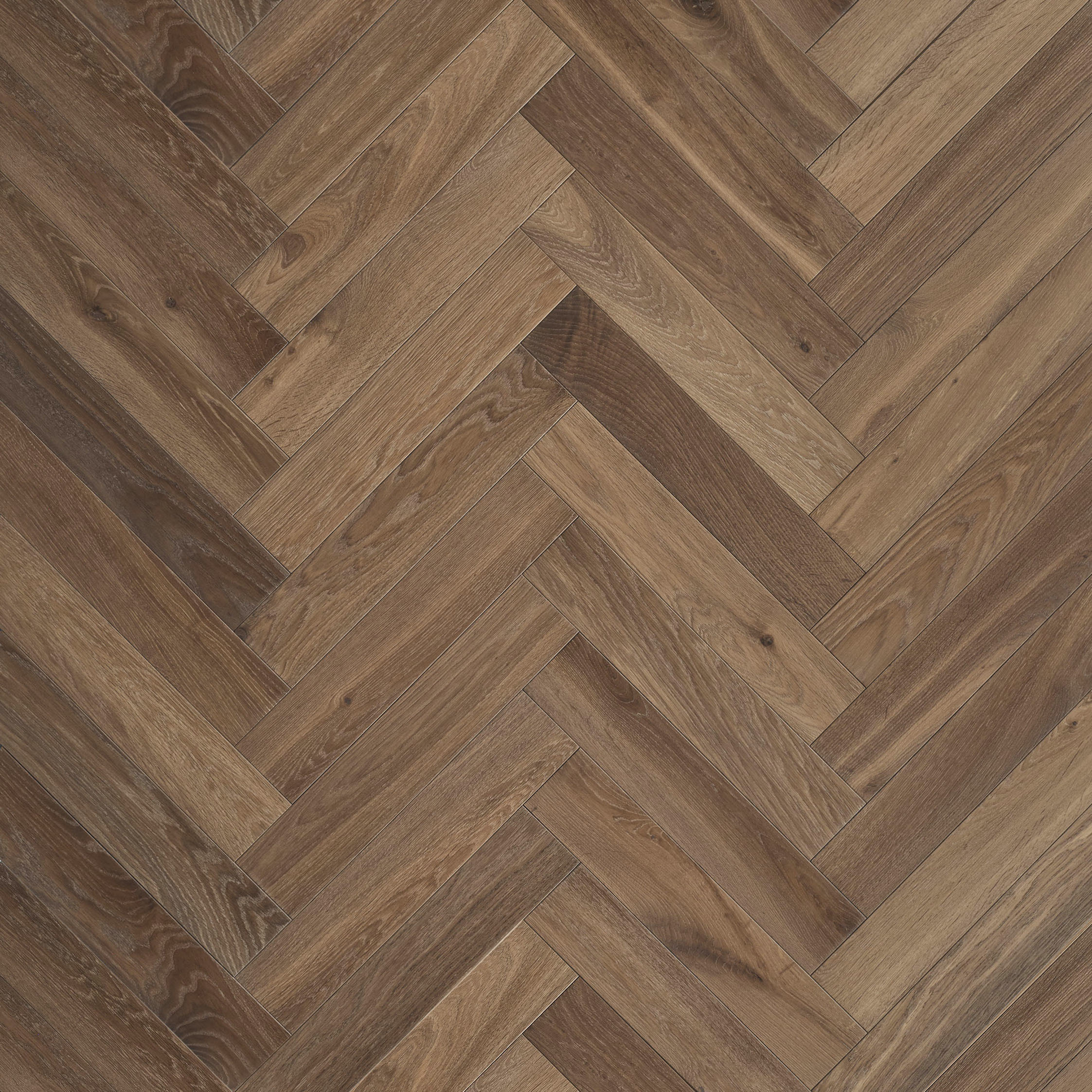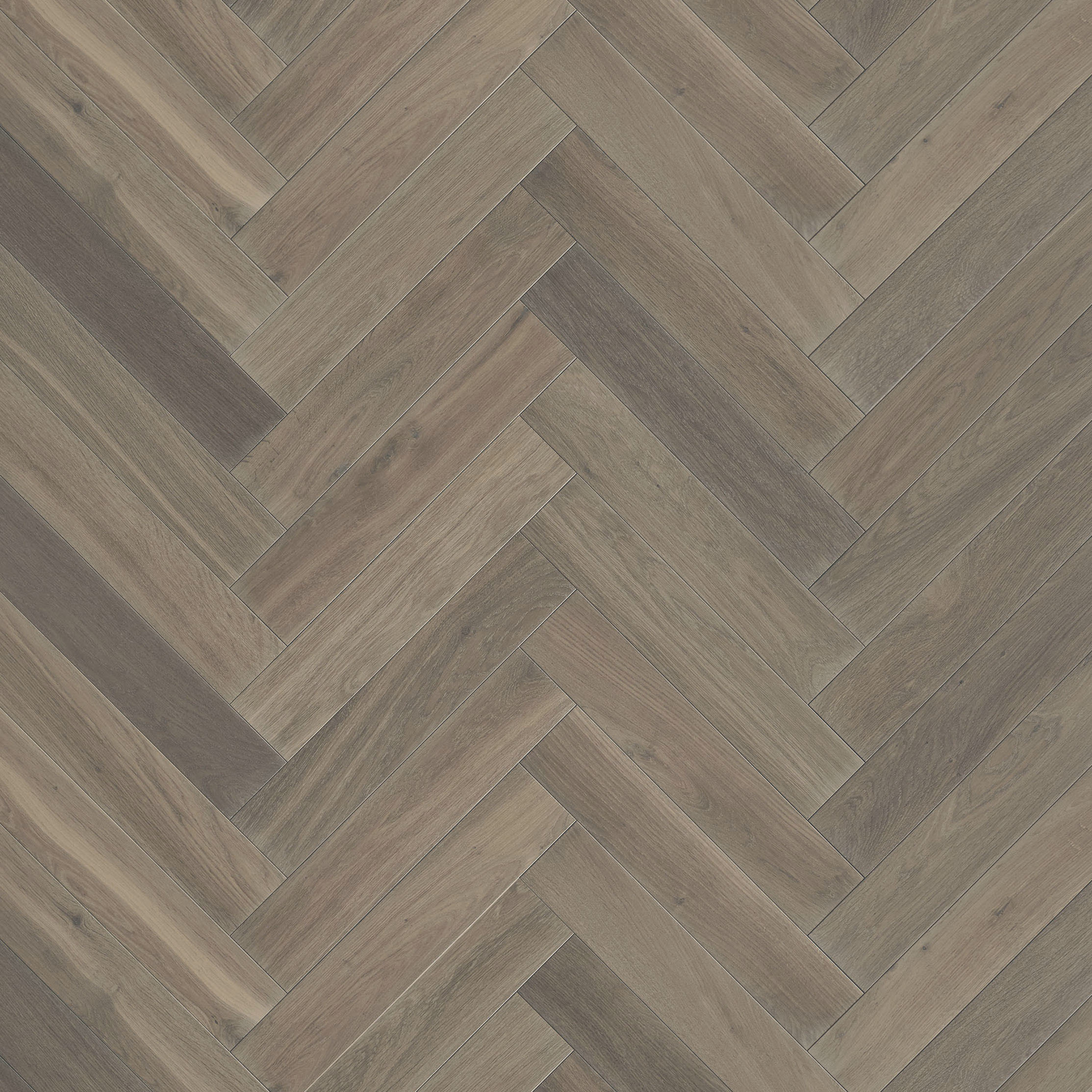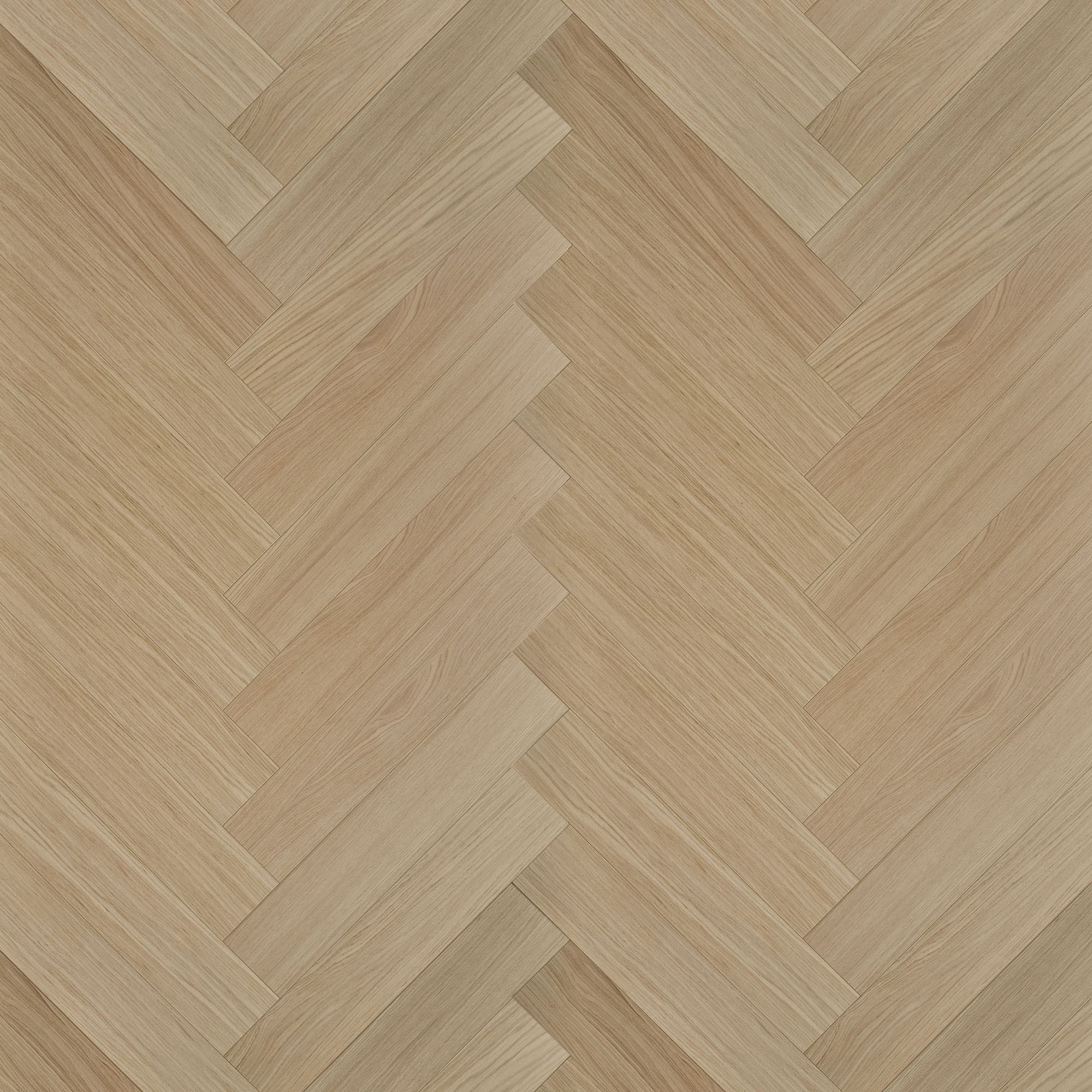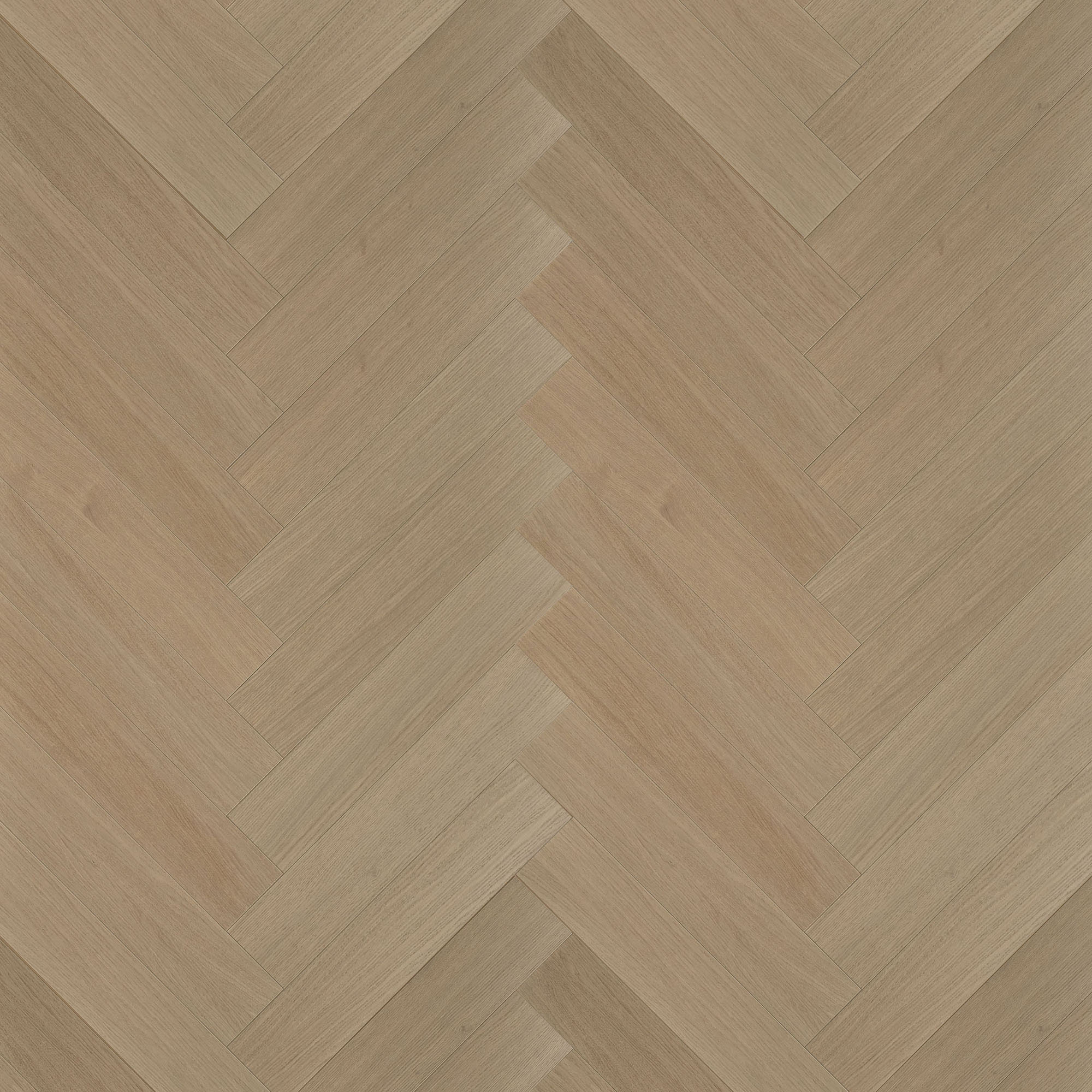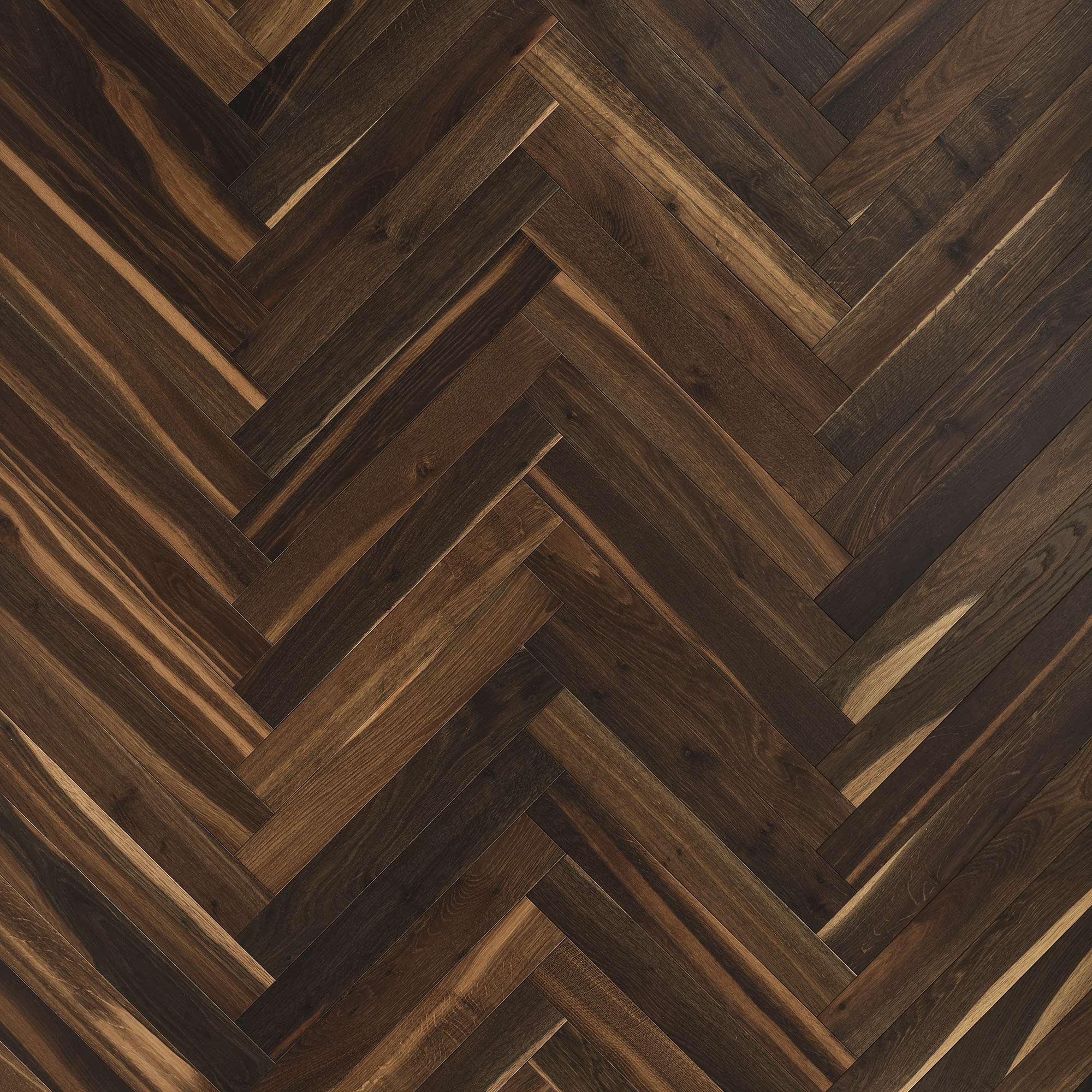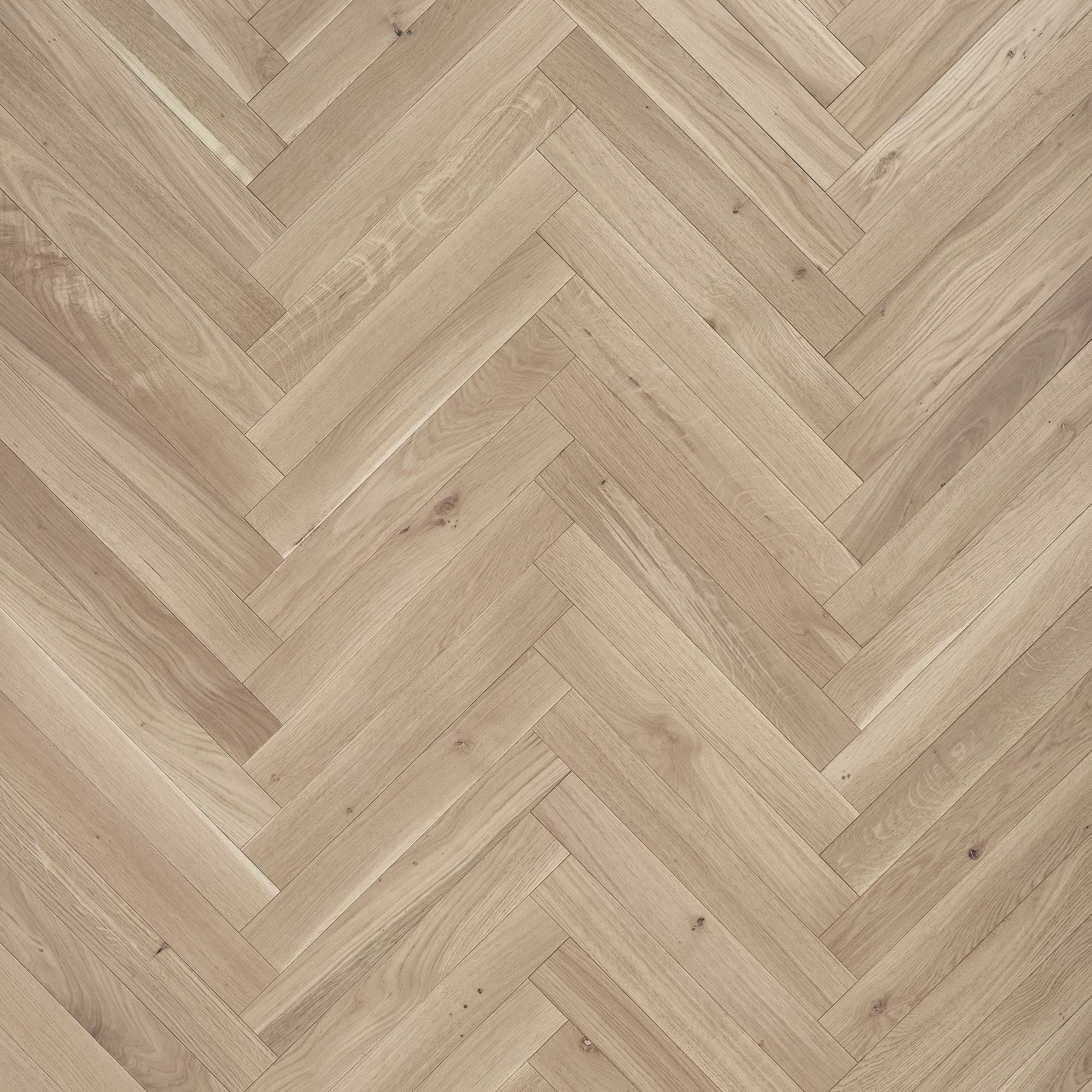Our parquet engineered wood flooring has received an FSC© certificate, which means all the timber used, from our European oak to our American walnut has been sourced from managed woodlands that meet the standards of The Forest Stewardship Council. For every tree we harvest to make our parquet flooring, several more saplings are planted in its place. Our construction methods also waste much less than traditional hardwood manufacturing, which requires average cuts of up to 14 and 22 mm. Engineered wood is only required to be 2 to 6 mm thick, with the main bulk coming from the layered, plywood base.
OUR ECO PROMISEEngineered Parquet Flooring
Drawing from a rich history – dating back as far as 17th century France – our stunning range of parquet engineered wood flooring balances the exquisite quality of historical design with stylish modern finishes, perfect for the homes of today. From the hearty depths of American black walnut up to the honeyed warmth of European oak, our parquet engineered wooden floors are made from the highest quality timber and available in chevron, herringbone, and baroque variations.
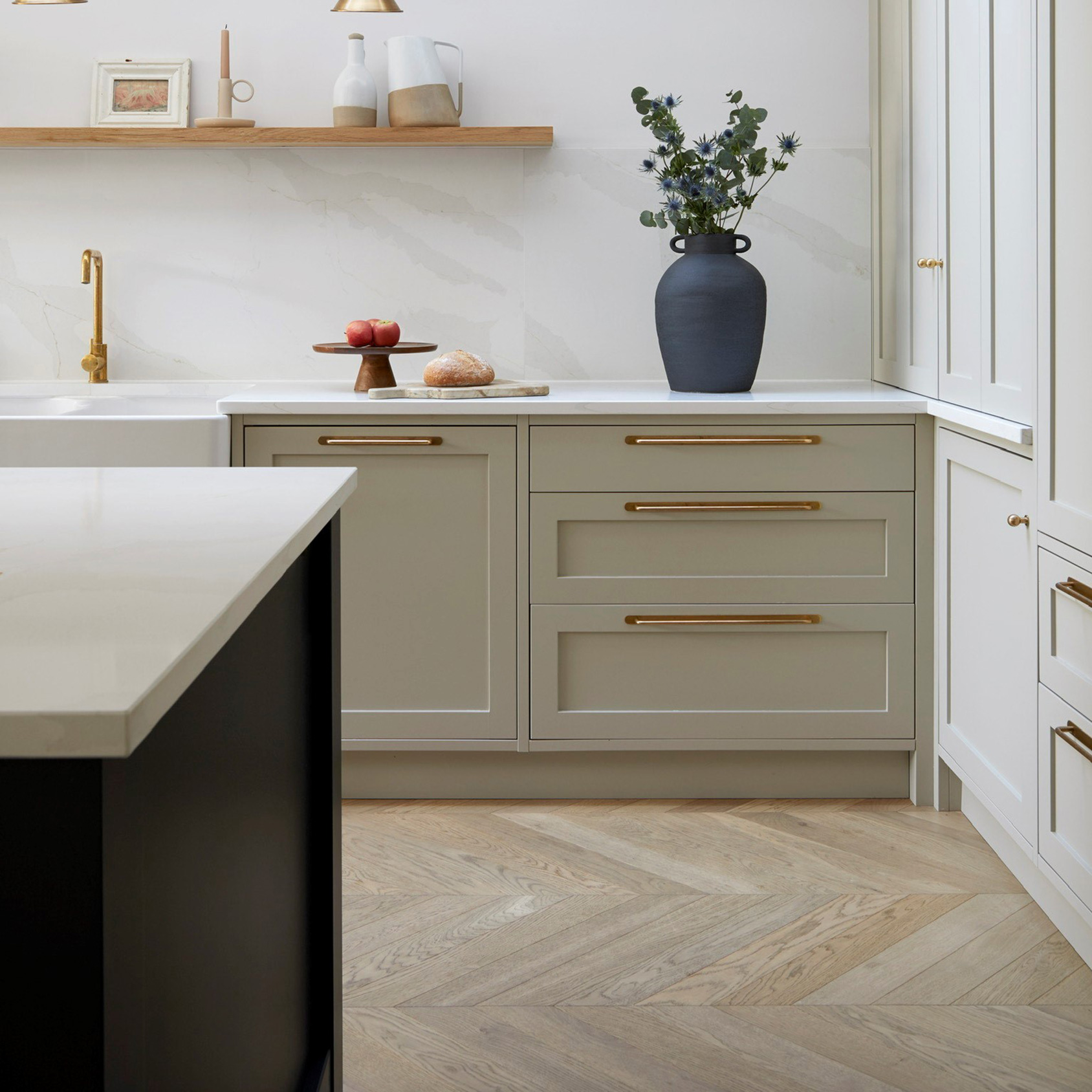
Our Parquet Collections
Filter
Our Parquet Products
-
CV101 Natural Oak Chevron
-
CV103 Smoked Oak Chevron
-
CV104 Seashell Chevron
-
CV105 Misty Grey Chevron
-
CV106 Thermo Oak Chevron
-
CX101H Mandheling Herringbone
-
CX102H Cataui Herringbone
-
CX103H Pacamera Herringbone
-
CX104H Geisha Herringbone
-
CX105H Baba Buden Herringbone
-
CX106H Blue Mountain Herringbone
-
CX107H Sidamo Herringbone
-
CX108H Caturra Herringbone
-
CX109H Villalobos Herringbone
-
CX110H Yunnan Herringbone
-
LEHB103 Harvest Corn Herringbone
-
LEHB104 Milled Wheat Herringbone
-
TH107 Natural Oak
-
TH108 Smoked Oak
-
TH109 Seashell
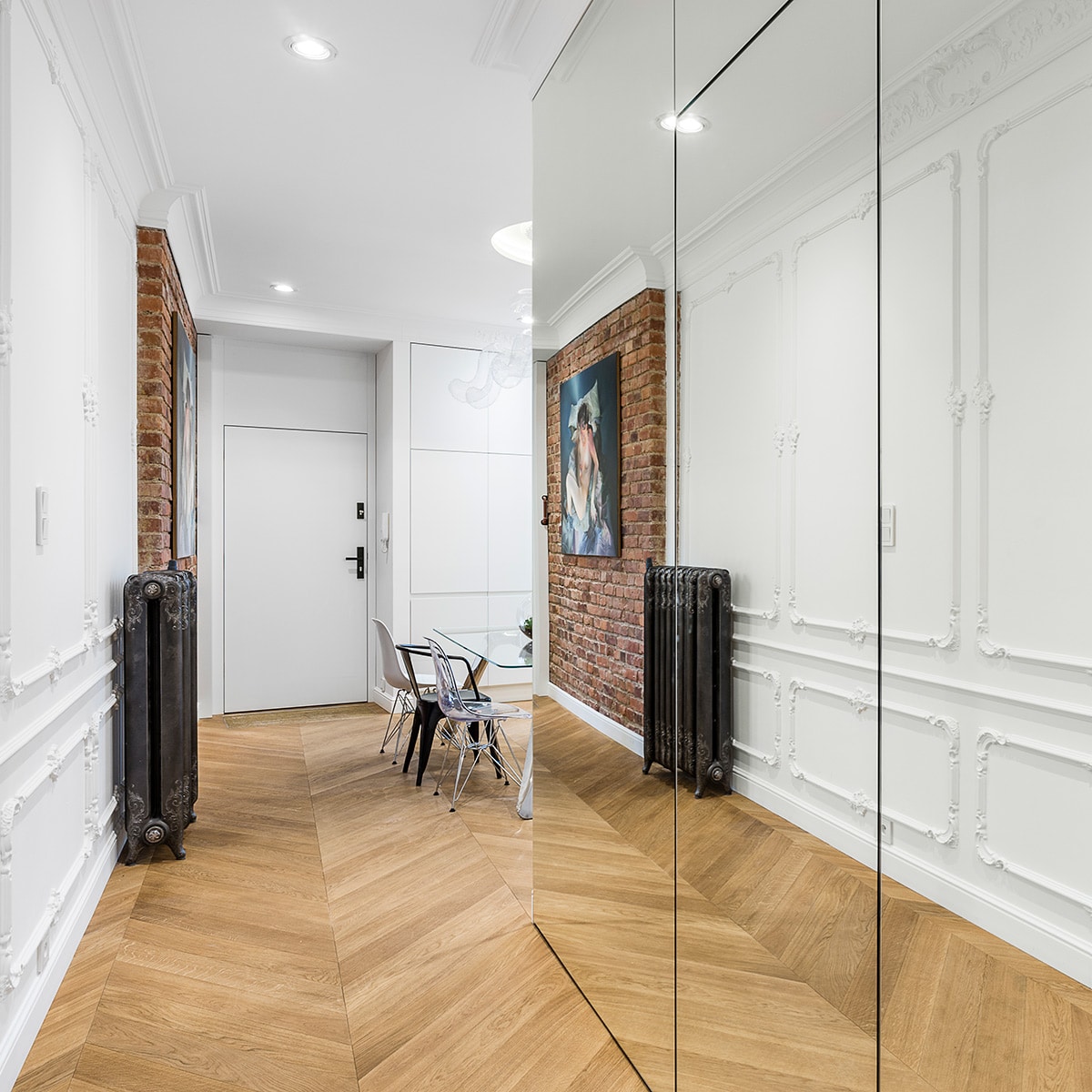
What is Parquet Engineered Wood Flooring?
Parquet is a type of decorative flooring that was first used to signify status and grandeur amongst the aristocrats of 17th-century Europe. Unlike standard hardwood floorboards, cut into long planks and arranged side-by-side, parquet flooring is instead cut into short ‘battens’ and arranged in a variety of geometric patterns.
Our range of parquet flooring differs from that of the 1600s, in that it is made using engineered wood. We start by layering slim cuts of birch, pine, poplar, or spruce ply and then top it off with a surface layer of oak or walnut, which we then finish with precision bevelling and low-VOC lacquer, which enhances and preserves the wood.
The Benefits of Parquet Engineered Wood Flooring
Underfloor Heating Safe
Thanks to its engineered wooden base, our entire range of parquet flooring can be laid safely over most modern underfloor heating systems, such as electrical and hot-water circuits.
It is natural for wooden flooring, engineered or otherwise, to fluctuate in size due to changing temperatures and moisture. This is especially true when installed over underfloor heating systems of any kind. But engineered wood flooring stands above the rest with its resistance to this kind of swelling, due to the robustness of its layered composition.
Versatile Design
Whether your property is a period snapshot or a glimpse into a modern future, our range of parquet engineered wood flooring can slot in seamlessly with your aesthetic. We have combined historical design with the refinement of today, which has resulted in a range of engineered wood flooring that is highly adaptive and ultimately timeless.
Tongue & Groove Fittings
The mosaic arrangements of traditional parquet flooring is understandably a specialist craft, which is what has made it so desirable, and so inaccessible, across the centuries. At V4 we have simplified the installation process using tongue & groove fittings, which allow for easy and secure fitting across all subfloors.
Parquet flooring relies on precise lines and mathematical arrangements in order to be fully impactful, and our tongue & groove edges ensure the perfect finish time and time again.
Finished with UV Oil
UV Oil provides a natural and tactile surface that accentuates the natural grain of the wood and properly embodies its history, whilst providing lasting stain and water resistance.
Detailed Micro-Bevelling
We take the time to carefully bevel the edges of our parquet blocks, which will prevent future splintering and damage due to sharp edges that catch. With precision 4-point bevelling, we ensure your finished parquet engineered wood flooring looks and feels seamless.
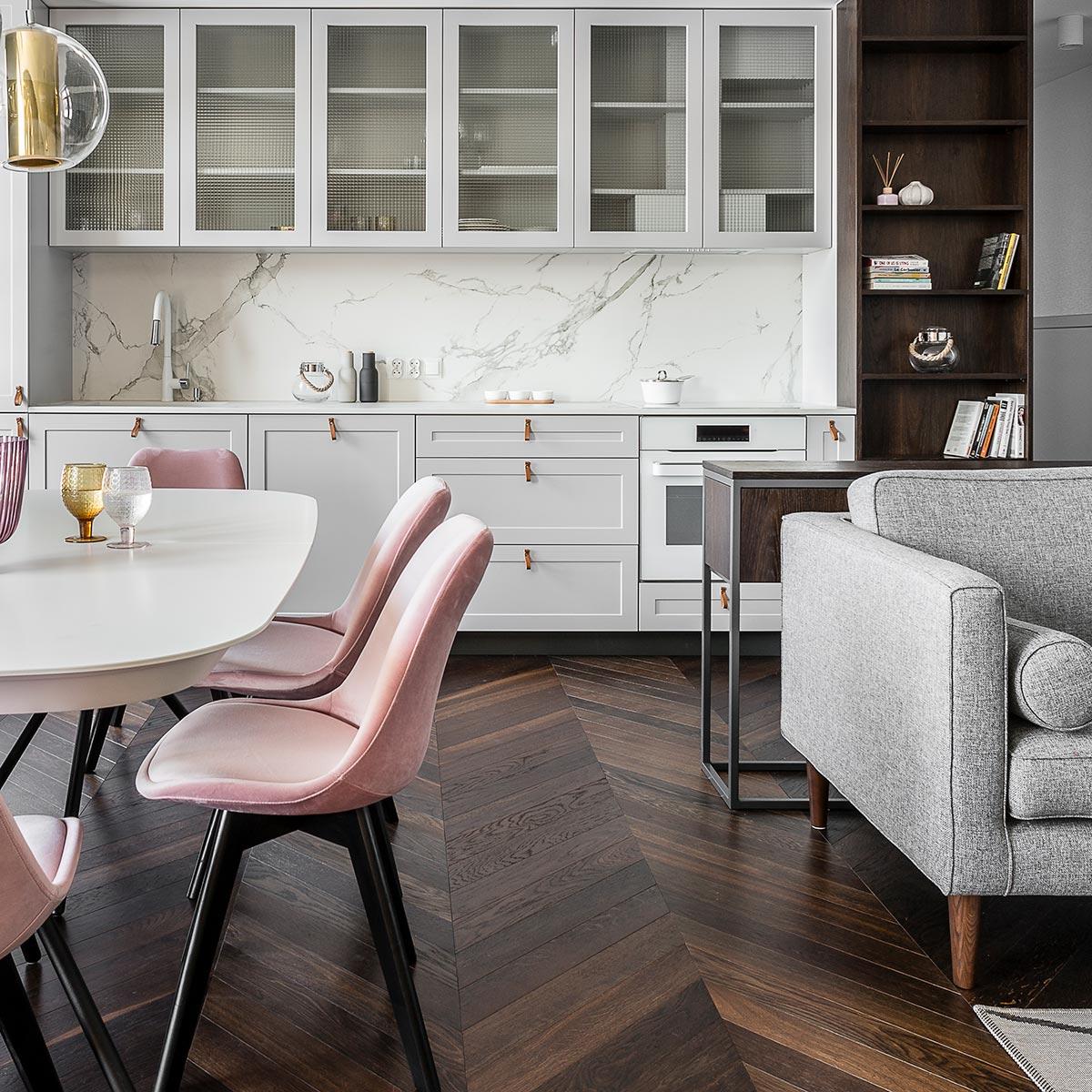
Our 35-Year Guarantee
We know our parquet flooring will stand the test of time. We trust our high-quality timber and our time-honoured manufacturing methods completely, which is why we offer an open-handed 35-year guarantee on all domestic installations.
Our Dedication to Sustainability
FAQs
What is the difference between chevron, herringbone, and baroque?
All three are types of parquet flooring, each utilising the signature geometric arrangement of short wooden battens, and they are often confused.
- Chevron flooring forms striking V-shapes that are arranged in long strips with a clean line running down the middle.
- Herringbone flooring also has a V-shaped arrangement, but forms interlocked zig-zags which are less uniform than chevron parquet.
- Baroque flooring is the most ornate of the three and comes in a wide variety of different styles and arrangements, most of which rely on cubic shapes and cross-hatched battens.
How do I prepare for my parquet engineered wood flooring installation?
If possible, it will be best to finish any building or wet work in the space before your parquet flooring is delivered. This is especially important, as you will not be able to place any weight on the flooring for at least a day after its installation.
Before you can go ahead with the installation, your parquet engineered wood flooring will need to acclimatise to the space. To do this, simply leave the planks in, or as near to, the room they are going to be installed in. They can be left in their original packaging, as it has been designed to be breathable enough to acclimatise the wood without the hassle.
How do I maintain parquet engineered wood flooring?
The UV oil finishes we use on our parquet flooring visually intensify and physically strengthen the engineered wooden surface against damage and dampness, but a small amount of occasional maintenance is recommended in order to keep your floors looking their best.
At least once a month, try to:
- Sweep and vacuum regularly to reduce the risk of embedded debris and abrasion
- Avoid crossing with heavy-duty or dirty outdoor footwear
- Apply pads to your furniture to minimise scratches and scuffs
- Clean up spillages and avoid leaving water puddles for long periods
- Opt for specialist floor cleaners over harsher household alternatives
- Vacuum before washing your floors to avoid staining
- Use non-abrasive mops and cloths for cleaning
Note: Do not use steam cleaners.
